Showcase area
- Pre-1900
- 1900-1909
- 1910-1919
- 1920-1929
- 1930-1939
- 1940-1949
- 1950-1959
- 1960-1969
- 1970-1979
- 1980-1989
- 1990-1999
- 2000-2009
- 2010 - present day
1845 - Prince Albert
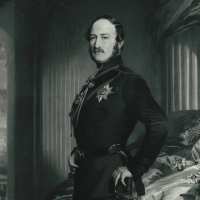 Prince Albert, the Prince Consort was the youngest son of the Duke of Saxe-Coburg-Gotha and 1st cousin to Queen Victoria whom he married in 1840. He supported the Queen in her role and developed his own interests in furthering educational aims and promoting social reforms. For example he designed model cottages, simple homes with light and ventilation unlike the cramped town accommodation and slums many workers had to endure.
Prince Albert, the Prince Consort was the youngest son of the Duke of Saxe-Coburg-Gotha and 1st cousin to Queen Victoria whom he married in 1840. He supported the Queen in her role and developed his own interests in furthering educational aims and promoting social reforms. For example he designed model cottages, simple homes with light and ventilation unlike the cramped town accommodation and slums many workers had to endure.
As a patron of the arts and sciences, Prince Albert supported the Royal College of Chemistry in 1845 and the Royal School of Mines in 1851 as Patron of both. He also devised and oversaw the Great Exhibition of 1851. It was Prince Albert’s idea to use the profits of the Great Exhibition to develop an educational area in South Kensington, to include museums and scientific and arts educational institutions. He died of typhoid in 1861.
1856 - W H Perkin
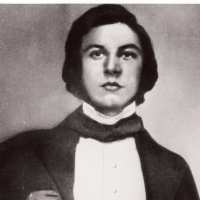 William Henry Perkin (1838-1907) discovered the first coal tar dye, mauveine (an aniline dye) – the first synthetic purple coloured dye in 1856 – founding a new industry which revolutionised fabric colouring and on which modern pharmaceuticals are based. His discovery led to organic chemistry becoming an applied science. Purple had been an expensive colour to create, hence the expression royal purple, but Perkin’s discovery took this and other bright colours to the masses. Mauveine was used in fabric colouring and on a stamp – the penny purple.
William Henry Perkin (1838-1907) discovered the first coal tar dye, mauveine (an aniline dye) – the first synthetic purple coloured dye in 1856 – founding a new industry which revolutionised fabric colouring and on which modern pharmaceuticals are based. His discovery led to organic chemistry becoming an applied science. Purple had been an expensive colour to create, hence the expression royal purple, but Perkin’s discovery took this and other bright colours to the masses. Mauveine was used in fabric colouring and on a stamp – the penny purple.
A piece of silk dyed using the original Mauve and presented to Queen Victoria at the 1862 Exhibition is in the College Archives, as is a piece given by I.C.I. to Assistant Professor of Organic Chemistry, Martha Annie Whiteley in 1946. She was awarded the OBE in 1920 for her chemical work for the 1st World War.
Thomas Henry Huxley (1825-1895)
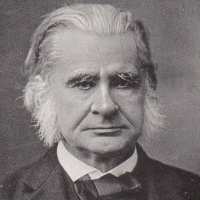 Thomas Henry Huxley began his scientific career in 1841 as a doctors' apprentice, and then studied at Charing Cross Hospital, London. The highest exam he ever took was the first part of the London M.B. for which he won the Gold Medal for Anatomy and Physiology. However he was to make his name as a respected research scientist and educator, with no further qualifications or titles except those conferred on him as honorary degrees. Right Honourable was added to these when he became a member of the Privy Council towards the end of his life.
Thomas Henry Huxley began his scientific career in 1841 as a doctors' apprentice, and then studied at Charing Cross Hospital, London. The highest exam he ever took was the first part of the London M.B. for which he won the Gold Medal for Anatomy and Physiology. However he was to make his name as a respected research scientist and educator, with no further qualifications or titles except those conferred on him as honorary degrees. Right Honourable was added to these when he became a member of the Privy Council towards the end of his life.
Huxley was an energetic man, working tirelessly at the Royal School of Mines, as first Dean of the Normal School of Science - Royal College of Science, and for the wider scientific community. Known as "Darwin's Bulldog", he supported Charles Darwin's theories of evolution in the face of great opposition. He took up the cause of Technical Education and fought vested interests to get it recognised and properly funded. Realising that scientists needed a good preliminary grounding, he supported the new Bills for Education, and on election to the London School Board was instrumental in structuring it and London elementary education.
Huxley contributed a great deal to scientific knowledge, three of his greatest achievements are: showing that jellyfish, like animals, were composed of two layers, suggesting that birds are descendents of dinosaurs and introducing the public to the idea of man's Neanderthal forebears.
Sir Henry Cole (1808-1882)
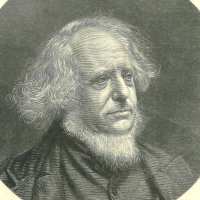 Sir Henry Cole was a man of many interests, always public spirited. He worked in public office for 50 years, first in the Records Office, rising to Assistant Keeper of Public Records where he improved the systems of the Public Record Office. Whilst at the Record Office, he contributed to the development of the Penny Postage system in 1840 and also, under the name Felix Summerly, wrote educational books for children on public institutions such as the National Gallery and wrote for adults on design.
Sir Henry Cole was a man of many interests, always public spirited. He worked in public office for 50 years, first in the Records Office, rising to Assistant Keeper of Public Records where he improved the systems of the Public Record Office. Whilst at the Record Office, he contributed to the development of the Penny Postage system in 1840 and also, under the name Felix Summerly, wrote educational books for children on public institutions such as the National Gallery and wrote for adults on design.
He began to organize exhibitions of industrial manufactures as part of his interest in art and design, in 1845, some with the Royal Society of Arts. He believed it important that British manufacture and design should be seen and new ideas developed and encouraged. He produced reports on the Patent Laws which led to an amending Act being passed.
Sir Henry Cole saw the need for an exhibition of manufacturing art and skills in Britain. He was instrumental in establishing the Royal Commission for the Great Exhibition of 1851, with Prince Albert, who was its President. Sir Henry advised on the use of the profits and supported the development of land and institutions in South Kensington using these. In 1852 the Board of Trade set up a Department of Practical Art with Cole as joint secretary with Lyon Playfair. This became the Department of Science and Art in 1853; Cole was its Secretary for 23 years. Cole established the South Kensington Museum (the precursor institution to the Victoria and Albert Museum) and was its first Director. He also invented the Christmas card.
William Edward Ayrton (1847-1908) and John Perry (1850-1920)
William Ayrton and John Perry worked closely together to develop ammeters at the City and Guilds Technical College.
William Ayrton (pictured left) passed with honours the first ever Bachelor of Arts examination in the University of London in 1867. He then worked for the Indian Government Telegraph Service, having come out with the top grade in their examination. Between 1873-1878 he was Professor of Natural Philosophy and Instructor in Telegraphy in the Imperial College of Engineering, Tokyo, Japan.
On return to England between 1879-1884 Ayrton became Professor of Applied Physics at Finsbury Technical College. From 1884 to 1908, he was Professor of Applied Physics and Electrical Engineering at City and Guilds Central Technical College, Kensington. In 1892, he became President of the Institute of Electrical Engineers.
John Perry attended Queen's College, Belfast. He was an electrical engineer and a mathematician. His first job was as a School teacher at Clifton College. He worked with Ayrton in Japan as Professor of Engineering. In 1881 he became professor of engineering and mathematics at Finsbury Technical College and in 1896 Professor of mathematics and mechanics at the Central Institution, retiring in 1914. During World War I he was an adviser on gyroscopic compasses. He insisted on the use of graph paper in classes.
Both Ayrton and Perry believed in teaching in practical and accessible ways. They were extremely inventive and applied their subject knowledge to the production of practical objects such as electrical instruments. They also wrote jointly about the magic Mirrors of Japan which relates to their optical properties and method of manufacture.
Ayrton and Perry worked together extensively, and collaborated to develop an ammeter, also working on other forms of measuring electricity, the electric tricycle, and a surface-contact system for electric railways.
In 1880, Ayrton and Perry devised the Permanent Magnet Ammeter, and by 1883 had devised a second form of ammeter, the Magnifying Spring Ammeter.
W E Dalby (1862-1936)
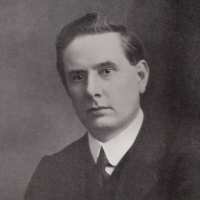 Professor William Ernest Dalby produced a number of Balancing Engines in his work at Imperial College. These were important in the development of more efficient railway engines.
Professor William Ernest Dalby produced a number of Balancing Engines in his work at Imperial College. These were important in the development of more efficient railway engines.
Dalby had worked at the Great Eastern Railway from the age of 14, and studied in his spare time. After achieving a BSc at London University, he taught at Cambridge between 1890 and 1896. Between 1896-1904, Dalby studied Engine Balancing and wrote the book The Balancing of Engines (published 1902).
He produced two, three, and four cylinder Balancing Engines and used them as teaching tools as well as working machines. The rationale behind engine balancing was to reduce undesirable effects such as unwarranted movement of parts of the engine and pressure on bearings. Such problems were caused by the forces necessarily running through an engine. Dalby saw that by balancing out the moving parts that this would help to eliminate such effects.
Dalby described the four-cylinder engine in his book as, "An apparatus which has been designed by the author to illustrate the principles of balancing reciprocating parts". This apparatus was designed to show the effects of running such a system unbalanced as well as balanced, so that the current would power the pistons to turn the wheels, without any additional movement.
Dalby was considered the authority in this field of engineering, but he also contributed widely to other areas during his time at the College between 1904 and 1931 when he retired. He was Dean of the City and Guilds College 1904-1931, Dean of the Faculty of Civil and Mechanical Engineering of London University 1908-1912 and became a Fellow of the Royal Society in 1913. Dalby's style was severe and demanding of both staff and students, but he was highly respected in the College and by the wider engineering and educational community. He was Vice-President of both the Institute of Mechanical Engineers and the Institution of Civil Engineers. He contributed to knowledge on the strength of screw threads, the mechanical properties of steel and optical recorders of load and elastic extension and devised and taught on the first course in aeronautics held at Imperial in 1909.
Henry de la Beche (1796-1855)
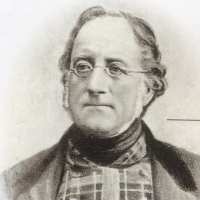 Henry de la Beche was founder of the Geological Survey of Great Britain, The Mining Record Office, The Museum of Economic Geology and the Government School of Mines of which he was the first Director. The Royal School of Mines developed out of these institutions with De la Beche as the driving force.
Henry de la Beche was founder of the Geological Survey of Great Britain, The Mining Record Office, The Museum of Economic Geology and the Government School of Mines of which he was the first Director. The Royal School of Mines developed out of these institutions with De la Beche as the driving force.
Largely self educated, particularly in geology, with a great facility for sketching and attention to detail, he disliked geological debate, theories and controversy and attempted to merely describe geological formations as he observed them. De la Beche worked for the Military Director of the Ordnance Survey on his geological mapping until the 1845 Geological Survey Act made the Survey a civil authority. (The Survey work first fell under the authority of the military Ordnance Office, whilst the Museum of Economic Geology was government supported and therefore civil.)
De la Beche worked consecutively for the civil and military authorities and he was not averse to going to the top in government circles (including to the Prime Minister Sir Robert Peel) when he wanted something for the Geological Survey and his other projects. The insignia of the RSM is derived from the buttons used on the uniforms of the Geological Survey staff whilst it was a military authority - a crown above two crossed hammers.
De la Beche knew the scientific community through his geological work, membership of the Geological Society, the Royal Society and the British Association for the Advancement of Science (BAAS). His geological researches which included so much travelling placed him well to assist with reports for the Commission on the Health of Towns. He was associated with Edwin Chadwick who was foremost in the Commission (Lyon Playfair was also a member) and Benthamite radicalism and the Society for the Diffusion of Useful Knowledge. He was a reforming slave owner, instituting systems of reward and care for workers on his Jamaican estate. When the income from the estates diminished, he had to ensure that his income came from other sources.
It was in his own interests to develop the Geological Survey, gain government support for it and show that it was indispensable to the good of the country and get it made official. He achieved his aims, but even so, initially much of the outlay for the work came from his own pocket so tardy were the government in voting adequate funds for it. His next great achievement was the Government support for the Royal School of Mines, the first such higher education institution.
August Wilhelm Von Hofmann (1818-1892)
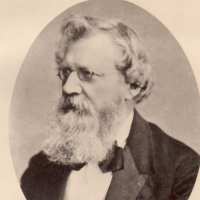 A.W. Von Hofmann was born in Giessen and studied under Liebig where he developed his interest in the organic bases of coal tar. When Hofmann was selected as the first Professor at the Royal College of Chemistry in London, he had a private laboratory in Bonn, was 'Privat Docent' lecturing on agricultural chemistry at Bonn University and continuing private research.
A.W. Von Hofmann was born in Giessen and studied under Liebig where he developed his interest in the organic bases of coal tar. When Hofmann was selected as the first Professor at the Royal College of Chemistry in London, he had a private laboratory in Bonn, was 'Privat Docent' lecturing on agricultural chemistry at Bonn University and continuing private research.
Prince Albert interceded with the German Government so that Hofmann was made Extraordinary Professor of Chemistry at Bonn with leave of absence for two years. Hofmann remained at the Royal College of Chemistry for twenty years, between 1845 and 1865. He then returned to Berlin in 1865 and worked until 1892. His pupil Perkin working at the RCC discovered the first aniline dye, derived from coal tar which he named Mauveine.
General John Fretchville Dykes Donnelly (1834-1902)
General John Donnelly served in the Royal Engineers and was in charge of the division of sappers detailed to prepare the ground in South Kensington bought by the profits of the Great Exhibition of 1851 for the establishment of educational institutions and museums. He was therefore involved with Henry Cole on the scheme and his subsequent career was spent working on it. He was made inspector for science in 1872, then Director of Science and so became controller of the RSM and other relevant institutions. In 1881 he became Assistant Secretary of the Science and Art Department and in 1884 permanent head. He played a large part in the re-ordering of the RSM and RCS.
He was knighted in 1893 and retired in 1899.
Although he was working for the Government, General Donnelly was still advanced by the army to the level of Major General in 1887. He is the source of the Gilbert and Sullivan song from the "Pirates of Penzance" I Am the Very Model of a Modern Major General.
Norman Lockyer (1836-1920)
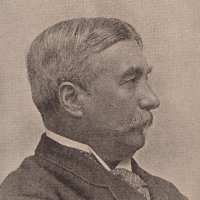 The 1870-1875 Royal Commission on Scientific Instruction and the Advancement of Science recommended the setting up of a government Solar Physics Observatory. The Commission's Secretary was Norman Lockyer who was seconded to South Kensington by the War Office to establish The Solar Physics Observatory in 1875. He was appointed Lecturer in 1881, then professor in 1887 (the first such title to be created) in Astronomical Physics at the Normal School of Science. He also directed the independent observatory and began the loan collection of scientific instruments which became later became the Science Museum (on the same site).
The 1870-1875 Royal Commission on Scientific Instruction and the Advancement of Science recommended the setting up of a government Solar Physics Observatory. The Commission's Secretary was Norman Lockyer who was seconded to South Kensington by the War Office to establish The Solar Physics Observatory in 1875. He was appointed Lecturer in 1881, then professor in 1887 (the first such title to be created) in Astronomical Physics at the Normal School of Science. He also directed the independent observatory and began the loan collection of scientific instruments which became later became the Science Museum (on the same site).
He meticulously organised the Astrophysics teaching, preparing a students guide in the form of a handbook of observational and laboratory work. Students got two hours a fortnight in the observatory for practical work. He lectured himself, illustrating with charts and diagrams, and when not teaching visited the classes and discussed astronomical matters. In 1890 the Solar Physics Observatory became part of the Royal College of Science and had an importance second only to that of the Greenwich Observatory. Lockyer remained Director until his resignation on the Observatory's transfer to Cambridge in 1911.
He headed eight government solar eclipse expeditions and studied the relationships between solar activity and terrestrial phenomena such as the weather and famine in India.
Lockyer discovered the gas later to be named helium in the sun's spectrum in 1868, for which he was knighted, and was a pioneer in the observation of sunspots. He has been credited with being a founder of spectroscopy and of astroarchaeology - the science of recognising alignments of ancient stones with natural light sources
Lockyer founded the journal Nature in 1869.
He built an Observatory for his own use in Salcombe Hill, Sidmouth Devon in 1912.
Martha Annie Whiteley (1866-1956)
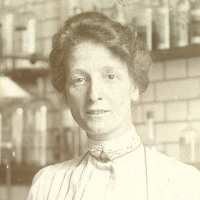 Martha Annie Whiteley was the first woman to hold a position on the teaching staff at the Royal College of Science. She joined the RCS as a teaching scholar in the Chemistry Department in 1904, was an Assistant in 1905, a Demonstrator in 1908; a Lecturer in 1914 and Assistant Professor (equivalent of Reader) in 1920.
Martha Annie Whiteley was the first woman to hold a position on the teaching staff at the Royal College of Science. She joined the RCS as a teaching scholar in the Chemistry Department in 1904, was an Assistant in 1905, a Demonstrator in 1908; a Lecturer in 1914 and Assistant Professor (equivalent of Reader) in 1920.
She fought for the admittance of women to the Fellowship of the Chemical Society between 1904 and 1920 and won. She was made a Fellow of the Royal Institute of Chemistry in 1918. She was awarded the OBE in 1920 for her chemical work for the 1st World War. She was supportive of all women at Imperial, using her influence to obtain increased cloakroom facilities for women staff and students in 1910.
At the request of the then Rector Sir Alfred Keogh, she founded Imperial College Women's Association in 1912. Keogh said of her: "She has an extraordinary power of expression which in some way enables her to obtain a very remarkable influence in the College, and a charm of manner particularly desirable in a teacher.... here you have no ordinary woman. I know of no one more likely to inspire women students to great things in science than Miss Whiteley".
Robert Offley Ashburton Crewe-Milnes, 1st Marquess of Crewe (1858-1945)
--tojpeg_1417973811188_x2.jpg) The Earl of Crewe became the first Chairman of the Governing Body of Imperial College.
The Earl of Crewe became the first Chairman of the Governing Body of Imperial College.
He had a distinguished career in parliament and in diplomatic service and an interest in education. He was Chairman of the Governing Body of Imperial College 1907-1922, President Board of Education 1916; Chancellor of Sheffield University and Chairman of London County Council 1917.
1908 - Henry Taylor Bovey (1850-1912)
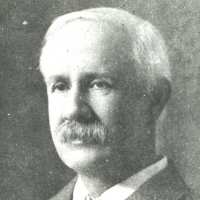 Henry Taylor Bovey FRS, Fellow Royal Society of Canada and Fellow of Queen’s College Cambridge was the first Rector of Imperial College.
Henry Taylor Bovey FRS, Fellow Royal Society of Canada and Fellow of Queen’s College Cambridge was the first Rector of Imperial College.
Born in Devon, he was educated at Cambridge University and trained in engineering with Sir George Lister who was involved with Mersey Docks and Harbour Board. Here, Bovey developed his talent for structures as an assistant engineer.
Following an accident which affected his lungs, it was necessary for him to live in a more congenial climate and co-incidentally he was offered the Chair of Engineering at McGill University Montreal in 1877. The Engineering School needed reorganising and re-directing. Bovey gained the support of the Principal to undertake this and proved his vision and organisational skills by creating an outstanding Engineering Faculty. This included benefaction for a new building, an example of his capacity for making useful connections.
However, his health was deteriorating and he deliberated when offered the position of 1st Rector of Imperial in 1907. In May 1908 the appointment was confirmed, but he only gave two years to Imperial due to his health and resigned at the end of 1909.
He died in Eastbourne in 1912. He was a founder member of the Society of Civil Engineers and the Liverpool Society of Civil Engineers.
Beits & Wernher
Early 20th Century Industrialists supported the RSM, Imperial College and Students Union Buildings and Science scholarships including, to a great extent, Sir Alfred Beit, Sir Otto Beit and Julius Charles Wernher.
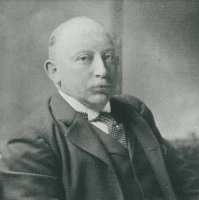 Sir Alfred Beit (1853-1906) was a South African diamond mine owner and financier, life director of De Beers Consolidated Mines Ltd; and joint owner Wernher, Beit and Co. Alfred Beit was a philanthropist who funded mining education, especially the RSM and Imperial College, establishing the Beit Trust. A statute of him by Paul Montfort flanks one side of the entrance to the RSM.
Sir Alfred Beit (1853-1906) was a South African diamond mine owner and financier, life director of De Beers Consolidated Mines Ltd; and joint owner Wernher, Beit and Co. Alfred Beit was a philanthropist who funded mining education, especially the RSM and Imperial College, establishing the Beit Trust. A statute of him by Paul Montfort flanks one side of the entrance to the RSM.
Sir Otto Beit (1865-1930) FRS KCMG 1st Baronet, Brother of Sir Alfred; financier and philanthropist, funded construction of the Beit Quad, Students Union building and hostel; founded the Beit Fellowships for Scientific Research at Imperial College. He was also a member of the Governing Body from 1912. A plaque depicting him by Omar Ramsden is situated in the Beit Quad entrance.
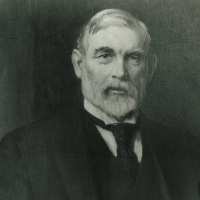 Julius Charles Wernher (1850-1912) 1st Baronet, Luton Hoo was a South African diamond mine owner and financier; joint owner Werhner, Beit and Co. Wernher was a philanthropist and fine art collector. He was a member of the Board of Education Departmental Committee which recommended the foundation of Imperial College. A statue of him by Paul Montford flanks one side of the entrance to the RSM.
Julius Charles Wernher (1850-1912) 1st Baronet, Luton Hoo was a South African diamond mine owner and financier; joint owner Werhner, Beit and Co. Wernher was a philanthropist and fine art collector. He was a member of the Board of Education Departmental Committee which recommended the foundation of Imperial College. A statue of him by Paul Montford flanks one side of the entrance to the RSM.
Alexander Gow
Alexander Gow became the First Secretary of Imperial College 1908 and was made Fellow of Imperial in 1946.
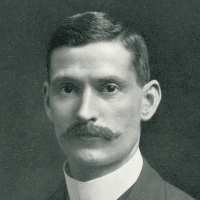 He was educated at Borough Road College 1887, where he was a staff member from 1890-1897. He gained a University of London BSc in 1893. Gow was then Chief Science Master at County High School Isleworth and Organising Secretary for Technical Education, Hounslow, Middlesex.
He was educated at Borough Road College 1887, where he was a staff member from 1890-1897. He gained a University of London BSc in 1893. Gow was then Chief Science Master at County High School Isleworth and Organising Secretary for Technical Education, Hounslow, Middlesex.
He became a Cambridge University Scholar 1900 (B.A. Natural Science Tripos, Chemistry and Physics. M.A. 1906), becoming Principal of Warrington Technical School Director in 1903 and Principal of Blackburn Technical School 1904-1908 and then Director of Education in Blackburn 1905-1908, when he came to Imperial with his considerable educational and administrative acumen.
1910 - Sir Alfred Keogh (1857-1936)
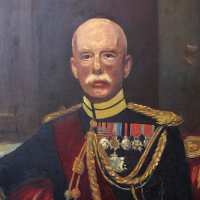 Sir Alfred Keogh KCB, GCB, GCVO was the second Rector of Imperial College.
Sir Alfred Keogh KCB, GCB, GCVO was the second Rector of Imperial College.
Keogh was educated at Queen’s College Galway with an MD from Queen’s University of Ireland 1878. Keogh worked at Brompton Hospital for Consumption and the Army Medical College Netley. A surgeon in Royal Army Medical Corps, Keogh became Surgeon General in 1904, re-organising the Royal Army Medical Corps. Keogh was involved with precursor of Territorial Army, the Territorial Force and became Director General of the Army Medical Service in 1905 until 1910 when he became Rector of Imperial.
He was known as a genial Rector with progressive ideas of pastoral care, the role of women in professional life and academic work. He asked Martha Annie Whiteley to set up a Women’s Association for the women students and staff at Imperial.
Keogh was recalled to the army by Kitchener 1914 to take charge again of military medical needs during WWI. One of the innovations he instituted was a hospital run entirely by women medical staff for military personnel in Covent Garden. His faith in the hospital was proved by its success; it closed only in 1919 when it was no longer required.
Keogh kept in touch with Imperial during his absence, sending a message of good wishes for the launch of the new Journal The Phoenix on January 30th 1915. Staff and students supported him by collecting for a new portable x-ray machine for military use. He came to College to accept the gift stating that it would be attached to No 15 General Hospital which was leaving for France that day, December 3rd 1914. That the collection took only a few days demonstrated the high esteem and affection that the College held Keogh.
Keogh returned to the Rectorship following the war until 1922.
1910 - Francis Herbert Bramwell
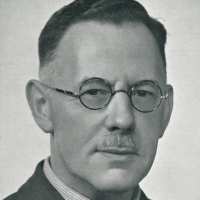 Francis Herbert Bramwell was awarded the first grant for study in aeronautics engine research at the National Physical Laboratory, partly funded by the Women’s Aerial League.
Francis Herbert Bramwell was awarded the first grant for study in aeronautics engine research at the National Physical Laboratory, partly funded by the Women’s Aerial League.
Frances Mary Gore Micklethwaite (1909)
Frances Micklethwaite ARCS, MBE, FIC, FCS joined the RCS in 1898, remaining Private Assistant to Dr G.T. Morgan, a chemist until 1912. She was awarded a Beit Memorial Fellowship for Medical Research in 1914.
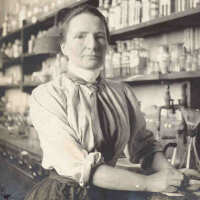 After working for Boots' Pure Drug Company, Micklethwaite became Principal of the Horticultural College in Swanley, Kent - the first horticultural college in the world for women, between 1920 and 1921. Swanley merged with Wye College in 1945.
After working for Boots' Pure Drug Company, Micklethwaite became Principal of the Horticultural College in Swanley, Kent - the first horticultural college in the world for women, between 1920 and 1921. Swanley merged with Wye College in 1945.
Arthur Holmes (1890-1965)
Holmes came to Imperial in 1907 to study Physics. In his second year he took a course in geology and decided to become a geologist. He graduated in 1911.
Whilst still an undergraduate studying the age of the earth, he undertook radiometric dating of rock specimens in the first such experiment known.
In 1912 he joined the staff at Imperial (as a Demonstrator), where he also obtained a PhD in 1917. He published the world renowned book The Age of the Earth in 1913, in which he estimated the Earth's age to be 1.6 billion years.
This brought him recognition as an geochronologist, though his dating of the earth was questioned by geologists at the time. During his career he held a Chair in Geology at Durham before being appointed Regius Professor of Geology at Edinburgh. Holmes later refined his estimate of the age of the earth. In 1946 he announced that the earth was at least 3 billion years old and probably older. An age of 4.5 billion years is now accepted.
Holmes led the subject of continental drift, propounding the theory in his book Principles of Physical Geology.
Alexander Eugen Conrady (1866-1944)
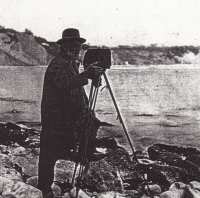 Conrady became Professor of Optical Design in the new Technical Optics Section of Physics in 1917. Conrady frequently made his own instruments to his specifications. His daughter Hilda married Rudolf Kingslake who had been one of her father’s students. Rudolf set up the Technical Optics department at Rochester University. He and Hilda completed the 2nd volume of Conrady's book, Applied Optics and Optical Design, as Conrady died before being able to finish it. This volume was published in 1969.
Conrady became Professor of Optical Design in the new Technical Optics Section of Physics in 1917. Conrady frequently made his own instruments to his specifications. His daughter Hilda married Rudolf Kingslake who had been one of her father’s students. Rudolf set up the Technical Optics department at Rochester University. He and Hilda completed the 2nd volume of Conrady's book, Applied Optics and Optical Design, as Conrady died before being able to finish it. This volume was published in 1969.
Sir Richard Glazebrook (1854-1935)
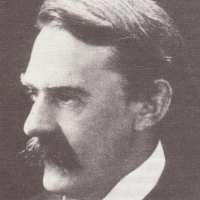 The first Chair of Aeronautics in the UK was created in 1919, the Zaharoff Chair of Aviation, which was held by Richard Glazebrook.
The first Chair of Aeronautics in the UK was created in 1919, the Zaharoff Chair of Aviation, which was held by Richard Glazebrook.
Educated at Cambridge Glazebrook studied optics under James Clerk Maxwell and worked with Lord Rayleigh at the Cavendish Laboratory, becoming Director in 1891. Between 1898 and 1899 he was Principal of University College Liverpool. He moved to the National Physical Laboratory as Director in 1899, remaining there until taking the Zaharoff Chair.
During his time at the NPL he was a member of Imperial College Governing Body and took a great interest in the development of courses. He set up training opportunities at the NPL for students, supported by grants from the Women's Aerial League.
Glazebrook was President of the Physical Society from 1903 to 1905 and first President of the Institute of Physics.
Sir Napier Shaw (1854-1945)
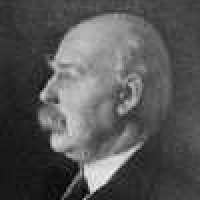 Sir (William) Napier Shaw FRS graduated in Maths and Natural Sciences at Cambridge University in 1876. His work on hygrometry, evaporation and ventilation led to chairmanship of the atmospheric pollution committee.
Sir (William) Napier Shaw FRS graduated in Maths and Natural Sciences at Cambridge University in 1876. His work on hygrometry, evaporation and ventilation led to chairmanship of the atmospheric pollution committee.
eteorology then became his career as director of national meteorological organisation and later, head of the British Meteorological Office in 1905. He was an advisor to the government during WWI and oversaw the transfer of the Meteorological Office to the Air Ministry in 1920.
Shaw became the first Professor of Meteorology in the UK at Imperial 1920-1924. The Air Ministry having close associations with the Meterological Office was of mutual benefit. Staff were seconded to Imperial for teaching and demonstration purposes and Meteorological and Air Force staff could attend relevant College lectures.
George Ingle Finch (1888-1970)
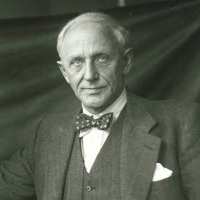 George Ingle Finch was one of the first staff members of the Chemical Engineering Department in 1913. He specialised in electro-chemistry and from the 1930s, electron diffraction. He combined his interest in climbing with his professional work. Understanding the value oxygen would give at high altitudes he developed lighter weight oxygen supply equipment and used it in his climb on Mallory’s 1922 Everest Expedition, the first to be equipped in this way, and reached over 8000m.
George Ingle Finch was one of the first staff members of the Chemical Engineering Department in 1913. He specialised in electro-chemistry and from the 1930s, electron diffraction. He combined his interest in climbing with his professional work. Understanding the value oxygen would give at high altitudes he developed lighter weight oxygen supply equipment and used it in his climb on Mallory’s 1922 Everest Expedition, the first to be equipped in this way, and reached over 8000m.
Sir Thomas Holland (1868-1947)
 Sir Thomas Holland was Rector between 1922-1929.
Sir Thomas Holland was Rector between 1922-1929.
Thomas Henry Holland won a scholarship to the RCS in 1884 and graduated with 1st Class with Honours in Geology in 1888, and also won the Murchison Medal and Prize. At the RCS, Holland came under the influence of T.H. Huxley who was at that time Dean. On graduating, Holland worked for Professor Judd at the RCS, until he was awarded a Berkeley Fellowship to Owens College Manchester in 1889. He took the opportunity of his appointment as Assistant Superintendent in the Geological Survey of India in 1890 to travel and arrived in Indai via America, Canada and the Far East. One of his duties was to be the Curator of the Geological Museum and Laboratory.
He proved himself to be an able organiser and administrator and was made Director of the Geological Survey of India in 1903, being elected Fellow of the Royal Society in 1904. He was appointed KCIE in 1908 for his services to the Indian Geological Survey.
He returned to Britain in 1910, taking the Chair of Geology and Mineralogy at Manchester University. After a period in Britain he again took a post in India, becoming President of the Indian Munitions Board in 1916.
He became Rector of Imperial College in 1920. He immediately set about getting the Associateship recognised as qualifying for the BSc degree with Honours by the University of London. His influence on College corporate life was also felt, with the impetus he gave to establishing the College Hostel. He was a very energetic man, with a vision and drive that enhanced any institution he worked for.
Sir Gilbert Walker (1866-1956)
Sir Gilbert Walker FRS graduated in mathematics from Cambridge University in 1889. His early work was on dynamics and electromagnetism. In 1903, he became Director General of Observatories in India which was where he became interested in meterology, when, having experienced the difficulties caused by the unprediactability of monsoon rainfall, he discovered the Southern Oscillation. He extrapolated the experience to world wide weather systems.
As Professor of Meterology at Imperial College in 1924, he worked on cloud forms using cellular structure experiements. In 1934 Walker retired but contributed to the WWII war effort by consulting on long range weather forecasting.
Sir Leonard Bairstow (1880-1963)
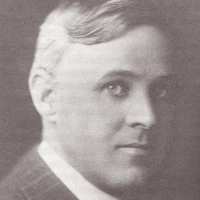 A student of Mechanics at the Royal College of Science 1898, Sir Leonard Bairstow joined the National Physical Laboratory where he assisted with establishing the Aerodynamics Division. He became a Professor of Aerodynamics in Imperial's new Aeronautics Department in 1920. Bairstow was appointed to the Zaharoff Chair of Aviation in 1923, becoming head of the Aeronautics Department, retiring in 1945.
A student of Mechanics at the Royal College of Science 1898, Sir Leonard Bairstow joined the National Physical Laboratory where he assisted with establishing the Aerodynamics Division. He became a Professor of Aerodynamics in Imperial's new Aeronautics Department in 1920. Bairstow was appointed to the Zaharoff Chair of Aviation in 1923, becoming head of the Aeronautics Department, retiring in 1945.
Bairstow was Vice President of the Royal Aeronautical Society 1930-1934 and a Member of the Aeronautical Research Council and President 1949-1952. He worked on wind tunnel design and stability of aircraft at a time before mass flight and prior to WWI. His 1919 book Applied Aerodynamics was still relevant in WWII as it was reprinted in 1944.
Sir Alexander Fleming (1881-1955)
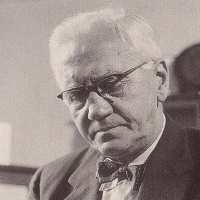 The 1945 Nobel Prize for Physiology and Medicine was awarded jointly to Sir Alexander Fleming for the discovery of penicillin and to Sir Howard Florey (1898-1968) and Dr Ernst Chain (1906-1979) for its subsequent development.
The 1945 Nobel Prize for Physiology and Medicine was awarded jointly to Sir Alexander Fleming for the discovery of penicillin and to Sir Howard Florey (1898-1968) and Dr Ernst Chain (1906-1979) for its subsequent development.
Sir Alexander Fleming worked in Sir Almroth Wright’s (1861-1947) Inoculation Department at St Mary's Hospital, and in the course of research in 1928 discovered the fungal mould penicillium notatum from which the anti-biotic drugs know as penicillin came.
Sir Ernst Chain and Sir Hugh Florey worked in Oxford to synthesise the drug and render it suitable for therapeutic purposes. Sir Ernst Chain was professor of Biochemistry at Imperial College in the 1960s. Ernst Chain's contribution to Imperial is celebrated today at Imperial through the Ernst Chain Prize.
1929 - Sir Henry Tizard
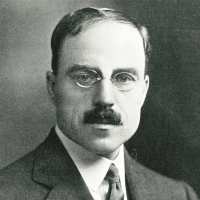 Sir Henry Tizard (1885-1959), a chemist and mathematician, was Rector of Imperial between 1929-1942. He was influential in national scientific institutions, worked in aeronautics and began working on radar before WWII. He led the Tizard Mission to America in 1940, an important technical information sharing mission, including radar and the jet engine.
Sir Henry Tizard (1885-1959), a chemist and mathematician, was Rector of Imperial between 1929-1942. He was influential in national scientific institutions, worked in aeronautics and began working on radar before WWII. He led the Tizard Mission to America in 1940, an important technical information sharing mission, including radar and the jet engine.
Letitia Chitty (1897-1982)
--tojpeg_1417976188697_x2.jpg) During WWI, Letitia Chitty worked for the Air Ministry where she met Pippard. Inspired by him she returned to Cambridge and changed course from the mathematics to engineering, graduating with first class honours in the Mechanical Sciences Tripos in 1921, the first woman to do so.
During WWI, Letitia Chitty worked for the Air Ministry where she met Pippard. Inspired by him she returned to Cambridge and changed course from the mathematics to engineering, graduating with first class honours in the Mechanical Sciences Tripos in 1921, the first woman to do so.
Her career was unusual for a woman at this period. Continuing at the Air Ministry, she worked with Richard Southwell (Imperial College Rector 1942-1948) and Pippard and then joined Imperial as Research Assistant in 1934. She and Pippard worked on aircraft structures, she undertaking much of the mathematical work and on stresses in arches of the voussoir type particularly and loading of wheels. Later she undertook major work on stresses of large dams in the middle east. WWII work included research into submarine hulls under shell attack, stresses in extensible cables and pulley blocks for barrage balloons, for the Director of Scientific Research of the Admiralty and the Ministry of Supply.
Chitty became Lecturer in 1937. She retired in 1962 the 1st (of 2) Lady Fellows of Royal Aeronautical Society, the 3rd Woman Corporate Member of Institute of Civil Engineers and the 1st woman to be appointed to a technical Committee of Institute of Civil Engineers 1958. She was awarded 4 Telford Premiums for papers written in collaboration with Pippard. Besides engineering and mathematical writng she produced a book called An Alphabet of Flowers containing plant drawings and notes on her holidays. In retirement she continued to attend College and continued to work until she was over 80.
In her later years, she was even interviewed by Vogue magazine.
Sir Ralph Freeman (1932)
Sir Ralph Freeman was the Chief Designer and Architect of the Sydney Harbour Bridge, the widest long-span bridge in the world. It is the world's largest single-arch bridge (but not the longest). The bridge was officially opened in 1932.
Freeman studied at the City and Guilds of London Institute, and in 1901 joined Douglas Fox & Partners, a firm of consulting engineers specialising in the design of steel bridges. He rose to become senior partner and in 1938 the firm changed its name to Freeman Fox & Partners. Freeman taught at Imperial College during First World War.
Another civil engineer that worked on the bridge was J. F. Pain, one of Stephen Dixon’s (Professor of Civil Engineering) students. He was awarded the Manby Premium for a paper on the Sydney Harbour Bridge. He led a group of about forty engineers working for Freeman on Sydney Harbour bridge. Among the forty were several Imperial graduates, including civil engineer Gilbert Roberts (later FRS), and his wife, Elizabeth Nada Hoira, a mathematics graduate. K. E. Hyatt was also involved in the project.
Robert John Strutt, fourth Baron Rayleigh (1875-1947)
Robert John Strutt became Chairman of the Governing Body in 1936 until his death in 1947. Strutt was a physicist as was his father J.W.S. Strutt and also like his father, was involved in psychical research, being President of the Society for Psychical Research in 1937. He became a Fellow of the Royal Society in 1905, served as Professor of Physics at Imperial College, London, from 1908 till 1919, and did valuable work on radio activity in rock formations. The rayleigh, a unit of luminous flux used to measure air glow, and the rayl a unit of, sound impedence are named after Robert John Strutt.
George Paget Thomson
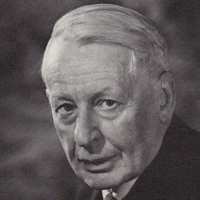 Thompson was the first Imperial College staff member to win a Nobel Prize. Thompson introduced atomic physics to the College. He was Head of Physics Department 1930 to 1953 when he retired.
Thompson was the first Imperial College staff member to win a Nobel Prize. Thompson introduced atomic physics to the College. He was Head of Physics Department 1930 to 1953 when he retired.
During his time at Imperial he became interested in nuclear physics, and when the fission of uranium by neutron was discovered at the beginning of 1939 he was struck by its military and other possibilities, and persuaded the British Air Ministry to procure a ton of uranium oxide for experiments. These experiments were incomplete at the outbreak of war, when Thomson went back to the Royal Aircraft Establishment to work on a series of war problems, including magnetic mines. A year later he was made Chairman of the British Committee set up to investigate the possibilities of atomic bombs. This committee reported in 1941 that a bomb was possible, and Thomson was authorized to give this report to the American scientists Vannevar Bush and James Conant.
He spent the next year as Scientific Liaison Officer at Ottawa, and for part of this time was in close touch with the American atomic bomb effort. On returning to England he was appointed Vice-Chairman of the Radio Board and later became Scientific Adviser to the Air Ministry.
After the war he returned to work at Imperial College, and early in 1946 became interested in the possibilities of nuclear power from deuterium (heavy hydrogen). Some experiments bearing on this were started at Imperial College under Dr. Ware, but Thomson's work was theoretical. Later, because of the requirements of secrecy, this work was transferred to the Associated Electrical Industry's Research Laboratories at Aldermaston, where Thomson continued to act as Consultant.
Sir Richard Vynne Southwell (1888-1970)
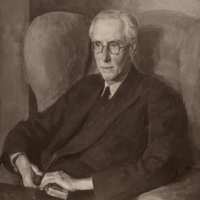 Educated at Cambridge gained first class honours in both the Mathematical and Mechanical Science tripos in 1912, Sir Richard Southwell was made Fellow of Trinity College, becoming Lecturer in Mechanical Sciences in 1914.
Educated at Cambridge gained first class honours in both the Mathematical and Mechanical Science tripos in 1912, Sir Richard Southwell was made Fellow of Trinity College, becoming Lecturer in Mechanical Sciences in 1914.
During WWI he served in the Royal Naval Air Service and post war worked at the Royal Aircraft Establishment Farnborough as head of the Aerodynamics and Structures Divisions.
He moved to the National Physical Laboratory in 1920, moving back to Trinity College as Fellow and Mathematics Lecturer in 1925. Southwell moved to Oxford in 1929 as Professor of Engineering Science and Fellow of Brasenose where he developed a school of research. His wide experience led him to becoming a member of many governmental technical committees, including the Air Ministry when the airships R.100 and R101 were being devised.
In 1942 he joined Imperial College as Rector, retiring in 1948. Whilst at Imperial he continued his research interests, but also gave time to students and was instrumental in the opening of Selkirk Hall, a Student residence.
William Penney, Baron Penney of East Hendred (1909-1991)
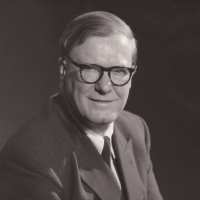 William Penney worked as a Laboratory Assistant before gaining a scholarship to study at Imperial, where he obtained his BSc and PhD, in mathematics. He then went to the University of Wisconsin and gained an MA, then to Trinity College Cambridge on an 1851 Senior Student Scholarship and a PhD on the application of quantum mechanics to the physics of crystals.
William Penney worked as a Laboratory Assistant before gaining a scholarship to study at Imperial, where he obtained his BSc and PhD, in mathematics. He then went to the University of Wisconsin and gained an MA, then to Trinity College Cambridge on an 1851 Senior Student Scholarship and a PhD on the application of quantum mechanics to the physics of crystals.
Between 1936 and 1945 he was Assistant Professor Mathematics at Imperial. He also undertook work for the Admiralty, which included studying underwater blast waves and assisted with the design of the Mulberry Harbours, the protective floating harbours that allowed disembarkment for the Allied invasion of France to take place on D-Day.
At the Home Office his appointments led to his becoming Principal DSIR Scientific Officer. In this capacity he was part of the British team working on the atomic bomb, code named the Tube Alloys Project, released from Imperial, he was then seconded to work on the Manhattan Project at Los Alamos, when the Allies combined their atomic bomb development in 1944.
He remained there until 1945, working on calculations relating to the release of the bomb. He witnessed the Nagasaki explosion at a distance as the observation plane he was allowed at short notice to board was delayed. He was part of the investigative team which visited Nagasaki and Hiroshima to assess the aftermath of the bombs in 1945.
Penney next became director of work on the British atomic bomb until its first test in 1952. Declining a Chair at Oxford, he continued to work in the nuclear industry and was a Board member of the newly formed UKAEA, United Kingdom Atomic Energy Authority, then Chairman between 1964 and 1967.
He became Rector of Imperial in 1967. In recognition of his services to Britain he was appointed OBE in1946, OBE Knight Commander 1952 and a life peerage as Lord Penney of East Hendred in 1967.and OM 1969. He was Rector of Imperial between 1967 and 1973, at what he felt was a difficult time for College administration, although he was an able and successful leader of Imperial. He did not leave any personal papers, deciding to burn his collection shortly before he died. The William Penney Laboratories, a new building for Computing, opened on the South Kensington Campus in 1988.
Alfred John Sutton Pippard (1891-1969)
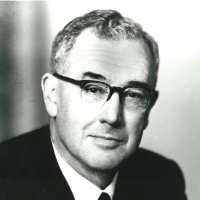 Educated at Bristol University, from 1911, Pippard first worked for the Pontypridd and Rhondda Joint Water Board.
Educated at Bristol University, from 1911, Pippard first worked for the Pontypridd and Rhondda Joint Water Board.
During WWI he worked on stress anaylsis of aircraft frames for the Air Ministry. This led to his becoming Visiting Lecturer at Imperial, but in 1922 he took the Chair of Engineering at University College Cardiff, then went to Bristol University.
In 1933 he came to Imperial as Professor of engineering and Head of the Civil Engineering Department, where he set about reorganising and modernising how structural analysis was taught. He undertook much research himself, particularly on the voussoir arch.
In WWII Pippard spent a year at the Research and Experiments Department, Princes Risborough, returning to Imperial to work on submarine hull structures and strength of bridges for military operations. In 1946 he introduced soil mechanics and concrete technology specialists to the staff. He became FRS in 1954 and was President of the Institution of Civil Engineers 1958-1959.
Patrick Maynard Stuart Blackett (1897-1974)
One of the leading physicists of the 20th century, Patrick Blackett was educated at Cambridge, where he also worked at the Cavendish Laboratory. In 1933 he moved to a Professorship at Birkbeck College and in 1937 to Manchester. He joined Imperial College as a Professor in 1953, retiring 1965. He was elected President of the Royal Society in 1965.
While working at Cambridge, Blackett developed an interest in cloud chambers. Blackett, with his co-worker G.P.S.Occhialini discovered the positron. The same particle was discovered at the same time by C.D.Anderson. Blackett also worked extensively on cosmic rays. He was awarded the Nobel Prize for Physics in 1948. Blackett can thus be seen as one of the first and leading experts on anti-matter.
Blackett was actively involved in the World War effort. He was instrumental in founding the field of Operational Research, which, among other successes, improved the survival chances of ship convoys.
After the war Blackett was strongly against the participation of Britain in the nuclear arms race. He also thought Britain had an obligation to improve the scientific and technological conditions in its former colonies.
Air Chief Marshall Sir Roderic Hill (1894-1954)
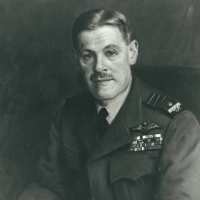 Roderic Hill studied architecture prior to WWI. He then joined the army, later transferring to the Royal Flying Corps. He earned the Military Cross, and the Air Force Cross for his work as an experimental pilot.
Roderic Hill studied architecture prior to WWI. He then joined the army, later transferring to the Royal Flying Corps. He earned the Military Cross, and the Air Force Cross for his work as an experimental pilot.
He was skilled in drawing and contributed to the journal Flight during WWI. He gave 32 years service to the Royal Flying Corps and the RAF, during which he undertook much technical experimental work himself. He was Director of technical Services to the British Air Commission in Washington 1941-1942 and became Commander in Chief of Fighter Command, continuing to fly operations himself. His removal of the guns to the coast during WWII saved London from the threat of many of the flying bombs.
He retired for the RAF and became Rector of Imperial in 1948. Here he gave great consideration to the sciences that he knew little of. He was a charming and energetic man, who saw the need for students to gain a rounded education, hence his introduction of Touchstone weekends – a general studies and discussion forum at Silwood Park alongside music recitals and arts lectures at lunchtimes in College. Hill was appointed to a post his father had also held, that of Vice Chancellor of London University in 1953.
Stanley Robert Sparkes (1910-1976)
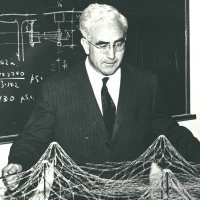 Sparkes was seconded to take charge of the College Planning Office in 1953, and be Director of Building Works until 1958. A Professor of Structural Engineering in the Civil Engineering Department 1959 -1972, Sparkes was part of the group involved in the Indian Institute of Technology (Delhi) development.
Sparkes was seconded to take charge of the College Planning Office in 1953, and be Director of Building Works until 1958. A Professor of Structural Engineering in the Civil Engineering Department 1959 -1972, Sparkes was part of the group involved in the Indian Institute of Technology (Delhi) development.
He was Dean of City and Guilds College 1964-1967 and President of the Rugby Football Club.
Sir Patrick Linstead FRS (1902-1966)
 Sir Patrick Linstead became Rector following the death of Roderic Hill. Linstead was an Organic Chemist whose work included the discovery of phthalocyanine dyes.
Sir Patrick Linstead became Rector following the death of Roderic Hill. Linstead was an Organic Chemist whose work included the discovery of phthalocyanine dyes.
Helen Kemp Porter (1899-1987)
Helen Porter was appointed to Chair of Plant Physiology in 1959, becoming the first woman professor at Imperial. After joining Imperial in 1921, she spent a year in the Organic Chemistry Department and was then appointed Research Assistant in the Botany Department.
In 1923 she joined the staff of the Research Institute of Plant Physiology attached to the College and concentrated primarily on research in the field of carbohydrate metabolism. She was engaged in research in America after the war.
In 1953 with the support of the Nuffield Foundation, the enzymology laboratory was opened within the Plant Physiology section of Imperial, under the direction of Porter. In 1956 she was elected FRS (12th woman to be elected)
Richard Barrer (1910-1996)
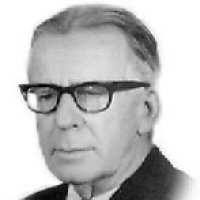 Richard Barrer studied at New Zealand before joining to Clare College Cambridge, between 1932 and 1939 where he was awarded a PhD. He was a sportsman, winning the Varsity Cross Country in 1934 and competing in other years. Barrer joined Imperial as Professor of Physical Chemistry in 1954, a position he retained until 1977. He was also Dean of the RCS.
Richard Barrer studied at New Zealand before joining to Clare College Cambridge, between 1932 and 1939 where he was awarded a PhD. He was a sportsman, winning the Varsity Cross Country in 1934 and competing in other years. Barrer joined Imperial as Professor of Physical Chemistry in 1954, a position he retained until 1977. He was also Dean of the RCS.
Barrer's interests in zeolites developed during the late 1930s and early 1940s. His work on zeolites was pioneering and his studies led to the industrial development of these materials in the late 1950s and early 1960s. These developments changed the economy of the developed world and the petrochemical industry, as zeolites proved very efficient in the conversion of crude oil to high octane fuels. Zeolites were also relatively clean materials, something that qualifies Barrer as one of the first "green" chemists Barrer also developed methods of measuring permeation rates.
There is the Barrer Award named after Richard Barrer given by the Royal Society of Chemistry and the Society for Chemical Industry in conjunction with the British Zeolite Assoication, every three years by for the best work in the area of porous inorganic chemistry.
Roger Bannister (1954)
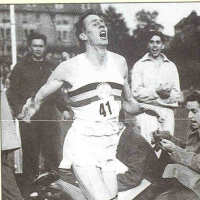 On 6 May 1954 at the Iffley Road running track in Oxford, 24 year old St Mary's Hospital Medical School student Roger Bannister sprinted his way onto the world athletics scene and into the world record books. In a time of 3 minutes, 59.4 seconds, the young athlete ran the first ever sub four minute mile.
On 6 May 1954 at the Iffley Road running track in Oxford, 24 year old St Mary's Hospital Medical School student Roger Bannister sprinted his way onto the world athletics scene and into the world record books. In a time of 3 minutes, 59.4 seconds, the young athlete ran the first ever sub four minute mile.
Since his student days, Sir Roger has maintained a long-standing connection with St Mary's, and later Imperial College when the two institutions merged. He worked as a consultant neurologist at St Mary's Hospital (and the Western Ophthalmic Hospital) from 1963 to 1985, chairing the St Mary's Hospital Medical Committee over the same period. Since 1984, Sir Roger has also been a trustee of the St Mary's Development Trust, and its Chairman since 1998.
In 2004, the College named a lecture theatre on the St Mary's Campus, part of the St Mary's Redevelopment, after Sir Roger, a fiftieth anniversary tribute to the man who did the impossible - running the 'miracle mile'. At the opening, Sir Roger described the art of record breaking as 'the ability to take more out of yourself than you've got.'
Alec Westley Skempton (1955)
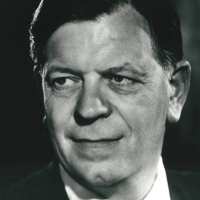 Alec Westley Skempton was a former undergraduate of the Civil Engineering Department. After taking an MSc in Concrete, he worked at the Building Research Station where he began to develop a soil mechanics group, a new science. He was invited to give undergraduate lectures as a visiting lecturer in 1936 and was appointed by Pippard in 1946 to establish the Soil Mechanics Section in the Civil Engineering Department. Post graduate courses began in 1950, but he was not appointed Professor of Soil Mechanics (a new post) until 1955. The post remained vacant on his appointment as Head of Department in 1957 until 1965. Skempton was the Head of Department for Civil Engineering from 1957 - 1976.
Alec Westley Skempton was a former undergraduate of the Civil Engineering Department. After taking an MSc in Concrete, he worked at the Building Research Station where he began to develop a soil mechanics group, a new science. He was invited to give undergraduate lectures as a visiting lecturer in 1936 and was appointed by Pippard in 1946 to establish the Soil Mechanics Section in the Civil Engineering Department. Post graduate courses began in 1950, but he was not appointed Professor of Soil Mechanics (a new post) until 1955. The post remained vacant on his appointment as Head of Department in 1957 until 1965. Skempton was the Head of Department for Civil Engineering from 1957 - 1976.
The Department expanded under his leadership. Skempton continued to pioneer work on soil mechanics, working on dam and other failures, such as the Aberfan Disaster. He was invited to join a commission on the Leaning Tower of Pisa in 1965. He was part of the Civil Engineering Department team which looked at the stability of the Queen's Tower, completed in 1968. The Civil Engineering Building has recently been renamed the Skempton Building.
- For more information on Skempton, visit http://www.cv.ic.ac.uk/SkemArchive/index.htm
Harry Elliot (1920)
Harry Elliot was educated at Manchester University, graduating in Physics in 1941. He served in the RAF until 1945, returning to Manchester for postgraduate study, becoming Lecturer in Physics after gaining his PhD. He joined Imperial in 1954 as a Lecturer, becoming Senior Lecturer in 1956 and reader in 1957. He was made Professor of Physics in 1960. Elliot was a leading expert on the geophysical and astronomical aspects of cosmic rays.
Imperial College Cosmic Ray and Space Physics Group, was led by Harry Elliot and according to Andre Balough's website first participated in a space mission in 1962. The group built a cosmic ray detector for the first British scientific satellite, Ariel 1.
Elliot took an extensive part in the establishment of the European Space Research Organisation (ESRO) in 1964 and the Cosmic Ray Group built three scientific instruments for ESRO's first satellite, ESRO II, launched in 1967. These instruments measured cosmic rays and other energetic particles in near-Earth space. The group contributed 23 instruments to the HEOS-1 (launched in December 1968), the first European spacecraft to venture outside the Earth's magnetosphere. One instrument measured cosmic rays, one measured energetic particles, and one measured magnetic fields in space.
The Imperial College team involved in that mission was led by Prof. Elliot, and consisted of Bob Hynds Andrew Engel, Peter Hedgecock and André Balogh. The magnetometer on that spacecraft started a long involvement by the group in the measurement of magnetic fields in space.
In 1972, D.J Southwood a former Imperial student wrote that there was a large involvement in the British Ariel programme and the new ESRO (European Space Research Organisation) programme - the joke was that the initials HEOS for the ESRO spacecraft launched in 1972 stood for 'Harry Elliot's Own Satellite'
Professor Samuel Eilon (1923)
Professor Eilon came to Imperial in 1952 as a postgraduate student, having been educated in the Israel Institute of technology in Haifa and working in industry. He gained his PhD in 1955 and became Lecturer in Production Engineering. In 1957 he returned to Haifa as Associate Professor and instituted a postgraduate course in production engineering, returning to Imperial as reader in 1959.
He won two Whitworth prizes for papers published by the Institution of Mechanical Engineers in 1960. In 1963 he was awarded a DSc (eng) and became Professor of Production Engineering in 1964.
His main research interest lay in the areas of production and inventory control, behavioural models of decision processes and industrial applications of operational research. He played an active role in the Institution of Production Engineers and councils for Management Education and in 1976, was a founding member of the Fellowship of Engineering (the Academy of Engineering)
Colin Cherry (1914-1979)
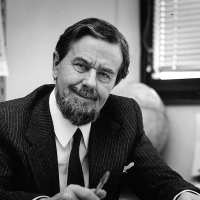 Colin Cherry joined Imperial in 1947. He became Henry Mark Pease Professor of Telecommunication in 1958. Cherry fostered research in the technical and theoretical aspects of telecommunication, including digital signal processing, coding theory and global communication. His book On Human Communication (1957) was very influential, especially among the young.
Colin Cherry joined Imperial in 1947. He became Henry Mark Pease Professor of Telecommunication in 1958. Cherry fostered research in the technical and theoretical aspects of telecommunication, including digital signal processing, coding theory and global communication. His book On Human Communication (1957) was very influential, especially among the young.
He was one of the first to promote the use of TV in the classroom and one of his ideas that was promoted by the press was world government by television. He was also an early promoter of televising parliament. He focused on auditory attention, specifically regarding the cocktail party problem. This concerns the problem of following only one conversation while many other conversations are going on around us. He conducted many experiments trying to explain this. His contributions influenced cognitive science (he is often considered to be a pioneer in this field even though he would never describe himself as a cognitive scientist).
Professor Eric Laithwaite (1921-1997)
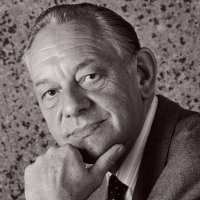 Eric Laithwaite was Professor of Heavy Electrical Engineering at Imperial between 1964 and 1986, Emeritus since 1986 and Fellow of Imperial College since 1990.
Eric Laithwaite was Professor of Heavy Electrical Engineering at Imperial between 1964 and 1986, Emeritus since 1986 and Fellow of Imperial College since 1990.
Between 1941 and 1946 Laithwaite served in the RAF and spent two years at RAE Farnborough working on automatic pilots. He graduated from Manchester University in 1949, undertook postgraduate research in electronic computer design and became Assistant Lecturer in 1950, Lecturer 1953 and senior lecture 1958, gaining his PhD in 1956. Laithwaite was an active member of the Institution of Electrical Engineers and a member of the British Transport Commission’s Special Advisory Panel on Electric Traction.
Laithwaite rediscovered in 1947 (at that time at the University of Manchester) the linear motor. A linear motor is an electric motor that has had its stator "unrolled" so that instead of producing a rotation, it produces a linear force along its length. He devoted a big part of his scientific life in the development of this technology.
He was a pioneer in the development of magnetic-levitated high-speed trains. Maglev (magnetic levitated) trains were built in Germany and Japan and more recently in other countries. The use of linear motors is growing in motion control applications. They have also been suggested for use in spacecraft propulsion - Laithwaite was working on a similar project for NASA when he died.
- Watch an interview with Professor Laithwaite from 1980.
- See footage of Professor Laithwaite in his labs: http://ichelix1.cc.ic.ac.uk/ramgen/mediaspool/centenary/laithwaite_demo.rm
- http://ichelix1.cc.ic.ac.uk/ramgen/mediaspool/centenary/laithwaite_demo2.rm
- http://ichelix1.cc.ic.ac.uk/ramgen/mediaspool/centenary/laithwaite_rtv31.rm
Professor Klaus Friedrich Roth FRS
Educated at Cambridge, Roth moved to University College London to undertake research and take up the appointment of assistant lecturer, becoming a professor in 1961.
He took up the Chair at Imperial College in 1966. Roth retained the Chair until 1988 when he became a visiting professor until 1996. Roth was awarded the Fields Medal in 1955 for work on the number theory, the Thue-Siegal-Roth Theorem related to algebraic numbers. His later work was on Szemeredi's theorem and Selburgh's Sieves.
Sir Owen Alfred Saunders (1903-1993)
Owen Saunders was educated at Birkbeck College and Trinity College Cambridge, obtaining degrees in both Mathematics and Sciences. He worked at the Fuel Research Station East Greenwich, between 1926 and 1932, where he met two lifelong colleagues, Margaret Fishenden and Cecil Lander who also became staff members at Imperial, Saunders joined Imperial as Lecturer in the Mechanical Engineering Department in 1932. He was appointed the first Clothworkers Reader in Applied Physics in 1937. His interest in aircraft piston engines and then jet engines led to his being seconded to the Ministry of Aircraft Production in 1942 where he was responsible for turbine engine research and worked with Sir Frank Whittle and Sir Harold Roxbee Cox. He returned to Imperial as Professor and Head of the Mechanical Engineering Department in 1946, succeeding Lander. Besides researching engines, Saunders worked with Margaret Fishenden on heat transmission, they jointly produced a book on it in 1932, which was the standard text for many years.
Saunders was the Dean of the City and Guilds College and Pro-Rector between 1964-1966. On the sudden death of Sir Patrick Linstead in 1966, he was acting Rector until, in 1967, he became Vice Chancellor of the University of London.
Professor Alan Wilfred Bishop (1920-1988)
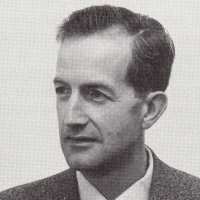 Alan Bishop first joined Imperial in 1946 to work with Southwell on stress analysis of embankment dams. He also worked with Alec Skempton. He became Professor of Soil Mechanics in 1965 and was Dean 1970-1973. He was very inventive in designing equipment and a great experimentalist. His designs were taken up by soil mechanics labs around the world.
Alan Bishop first joined Imperial in 1946 to work with Southwell on stress analysis of embankment dams. He also worked with Alec Skempton. He became Professor of Soil Mechanics in 1965 and was Dean 1970-1973. He was very inventive in designing equipment and a great experimentalist. His designs were taken up by soil mechanics labs around the world.
His work included the design of dams and he was a member of the Institution of Civil Engineers Committee on Reservoir Safety. He retired from Imperial in 1980. Bishop acted as consultant on many large projects and chaired the team of investigators at the 1966 Aberfan colliery tip slide disaster. The outcome of the inquiry in which Bishop led the team of technical advisors , and was involved in advising on the legislation that followed, having a great impact on safety and security in the mining industry.
William Penney, Baron Penney of East Hendred
 William Penney worked as a Laboratory Assistant before gaining a scholarship to study at Imperial, where he obtained his BSc and PhD, in mathematics. He then went to the University of Wisconsin and gained an MA, then to Trinity College Cambridge on an 1851 Senior Student Scholarship and a PhD on the application of quantum mechanics to the physics of crystals.
William Penney worked as a Laboratory Assistant before gaining a scholarship to study at Imperial, where he obtained his BSc and PhD, in mathematics. He then went to the University of Wisconsin and gained an MA, then to Trinity College Cambridge on an 1851 Senior Student Scholarship and a PhD on the application of quantum mechanics to the physics of crystals.
Between 1936 and 1945 he was Assistant Professor Mathematics at Imperial. He also undertook work for the Admiralty, which included studying underwater blast waves and assisted with the design of the Mulberry Harbours, the protective floating harbours that allowed disembarkment for the Allied invasion of France to take place on D-Day.
At the Home Office his appointments led to his becoming Principal DSIR Scientific Officer. In this capacity he was part of the British team working on the atomic bomb, code named the Tube Alloys Project, released from Imperial, he was then seconded to work on the Manhattan Project at Los Alamos, when the Allies combined their atomic bomb development in 1944.
He remained there until 1945, working on calculations relating to the release of the bomb. He witnessed the Nagasaki explosion at a distance as the observation plane he was allowed at short notice to board was delayed. He was part of the investigative team which visited Nagasaki and Hiroshima to assess the aftermath of the bombs in 1945. Penney next became director of work on the British atomic bomb until its first test in 1952. declining a Chair at Oxford, he continued to work in the nuclear industry and was a Board member of the newly formed UKAEA, United Kingdom Atomic Energy Authority, then Chairman between 1964 and 1967.
He became Rector of Imperial in 1967. In recognition of his services to Britain he was appointed OBE in1946, OBE Knight Commander 1952 and a life peerage as Lord Penney of East Hendred in 1967.and OM 1969. He was Rector of Imperial between 1967 and 1973, at what he felt was a difficult time for College administration, although he was an able and successful leader of Imperial. He did not leave any personal papers, deciding to burn his collection shortly before he died. The William Penney Laboratories, a new building for Computing, opened on the South Kensington Campus in 1988.
Professor Joan Woodward (1916-1971)
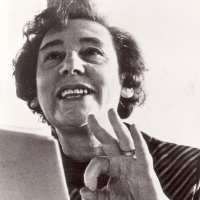 Joan Woodward was the second woman professor at Imperial. She joined the College in 1957 as a part time lecturer in Industrial Sociology and was appointed to a Senior Lectureship in the Production Engineering Section in 1962.
Joan Woodward was the second woman professor at Imperial. She joined the College in 1957 as a part time lecturer in Industrial Sociology and was appointed to a Senior Lectureship in the Production Engineering Section in 1962.
She was invited to work part time for the Ministry of Labour in 1964. Woodward was appointed Professor of Industrial Sociology and Director of the Industrial Sociology Unit in 1969. She published a book in 1970 entitled Industrial Organisation: Behaviour and Control describing the research work undertaken by her group since 1962.
Sir Derek Barton
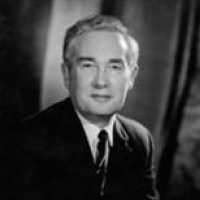 Sir Derek Barton, Professor of Organic Chemistry at Imperial College was a leading chemist. His seminal work on the conformation of organic molecules led to his being awarded the Nobel Prize for Chemistry in 1969 (jointly with Odd Hassel).
Sir Derek Barton, Professor of Organic Chemistry at Imperial College was a leading chemist. His seminal work on the conformation of organic molecules led to his being awarded the Nobel Prize for Chemistry in 1969 (jointly with Odd Hassel).
Derek Barton studied Chemistry at Imperial College (BSc 1940, PhD 1942), working under Ian Heilbron. He became Assistant Lecturer at Imperial in 1945. Between 1946 and 1949 he was Imperial Chemical Industries Research Fellow. After a year at Harvard (where he wrote the Nobel-prize winning paper on conformational analysis) he came back to Britain.
In 1957 he became Professor of Organic Chemistry at Imperial, a position he retained until 1972. During his Imperial years he was awarded the Nobel Prize and a knighthood. His work on conformational analysis, especially his research on the spatial arrangements of organic molecules and reactions mechanisms, play an important role in organic chemistry. Conformational analysis altered the way in which chemists think about the shape and reactivity of molecules in three-dimensional space.
Denis Gabor (1900-1979)
Born in Hungary, Denis Gabor and his brother George were encouraged by their father to build electronic equipment at home. During his university education and first job he lived in Germany. After obtaining his doctorate in 1927, he worked for Siemans and Halske AG. Leaving Germany when Hitler came to power, Gabor took a job at British Thomson Houston (BTH) in Rugy in 1934. He married Marjory Butler in 1936 and persuaded his brother Andre, a mathematician, to emigrate to England and also take out citizenship on the eve of World War II. During the war Denis Gabor was registered as an Alien with Special Qualifications and had to work outside the main BTH building in a hut by the fence. In 1948 Gabor joined Imperial as Reader in Electron Physics, was appointed FRS in 1956 and Professor of Applied Electron Physics in 1958, retiring from the Chair to become Professor Emeritus and Research Fellow in 1967.
His experiments on holography began in the 1940s and on the flat television tube in the 1950s. For the Invention of Holography Gabor was awarded the Nobel Prize for Physics in 1971.
His niece, Janet Kitchen, revealed "He built a villa in Italy with his Nobel Prize money and his favourite form of relaxation there, apart from visits to the beach, was table tennis, which he would play with his guests on the terrace each evening before dinner".
The first engineer to win the prize – he always thought of himself as an inventor. He wrote on the theory of communication. His concern for society was demonstrated in his being a founding member of the Club of Rome and writing on the progress of society in relation to modern technology.
- Listen to a repeat of Gabor's Nobel lecture, delivered at Imperial during a time of power shortages.
- Listen to Sir Eric Ash and Prof Igor Aleksander discuss Ash’s time with Gabor in his research lab. Missing photo
Rodney Robert Porter (1917-1985)
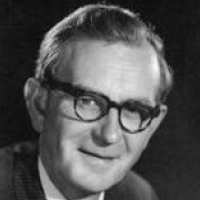 Rodney Robert Porter was educated at Liverpool University graduating in 1939 in Biochemistry, gaining his PhD from Cambridge in 1948. Between 1949 and 1960, Porter worked for the National Institute of Medical Research.
Rodney Robert Porter was educated at Liverpool University graduating in 1939 in Biochemistry, gaining his PhD from Cambridge in 1948. Between 1949 and 1960, Porter worked for the National Institute of Medical Research.
He became Pfizer Professor of Immunology at St Mary's Hospital Medical School in 1960, holding the post until 1967. He was appointed to the Whitley Chair of Biochemistry in 1967.
In 1972 Porter won the Nobel Prize for Medicine or Physiology, jointly with G.M.Edelman for determining the exact structure of an antibody.
Brian Hilton Flowers - Baron Flowers of Queen's Gate (1924)
Brian Hilton Flowers was educated at Gonville and Caius College Cambridge where he read physics and electronics from there he joined the Anglo-Canadian Atomic Energy Project in Canada, at the University of Montreal, in 1944, and at Chalk River, Ontario in 1945.
Returning to England Flowers joined the Nuclear Physics Division of the Atomic Energy Research Establishment, Harwell in 1946, working on the measurement of the thermal cross-section of tritium and devising a method of measuring the photodisintegration of the deuteron. In 1948 he transferred to the Theoretical Physics Division at Harwell, undertaking work on nuclear reactions.
Moving to the Department of Mathematical Physics at Birmingham between 1950-1952, he worked on problems of nuclear structure relating to the nuclear shell model, in collaboration with AR Edmonds. Flowers was awarded a DSc by the University of Birmingham in 1953.
He became Head of the Theoretical Physics Division at Harwell in 1952, then Chief Research Scientist in 1958. He was appointed Professor of Theoretical Physics University of Manchester in 1958. Flowers was elected Fellow of the Royal Society in 1961 and Langworthy Professor of Physics and Head of Department between 1961-1972.
He became a member of the Advisory Council on Scientific Policy from 1962 to 1964 and of the Council for Scientific Policy, 1965-1967. Flowers was knighted in 1966. He became Chairman of the Computer Board for Universities and Research Councils 1966-1970 and then Chairman of the Science Research Council (SRC), 1967-1975, ensuring United Kingdom participation in the 300 GeV project at CERN and the SRC's establishment and development of the Engineering Board.
Flowers was appointed Rector of Imperial in 1973 and held the post until 1985. His other duties and appointments included his being President of the Institute of Physics1972-1974, and the European Science Foundation, 1974-1980; Chairman of the Royal Commission on Environmental Pollution, 1973-1976, and the Standing Commission on Energy and the Environment, 1978-1981.
In 1979, he was created a life peer taking the title Baron Flowers of Queen's Gate in the City of Westminster. Politically he was a founder member of the Social Democratic Party in 1981 and front bench spokesman on issues relating to science, education, energy and the environment until 1989. He became Chairman of the Committee of Vice-Chancellors and Principals in 1983-1985; Vice-Chancellor of the University of London, 1985-1990. He was Chairman of the Nuffield Foundation 1987-1998, then Chairman of the House of Lords Select Committee on Science and Technology, 1989-1993 and President of the Parliamentary and Scientific Committee, 1993-1997. Flowers was Chancellor of the University of Manchester in 1994.
His work in the House of Lords continues and he and his wife Mary and their family remember very fondly their time at Imperial, including the privilege of living in the Rector's Lodgings in the College's Norman Shaw House, 170 Queen's Gate.
Janet Vida Watson (1923-1985)
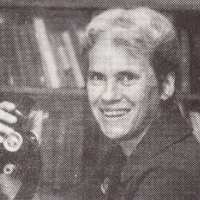 Appointed Senior Lecturer in Geology in 1973, Janet Watson was awarded a personal Chair in 1974, becoming Imperial’s 3rd woman professor. She was the first woman graduate of the Geology Department, graduating with first class honours in 1947.
Appointed Senior Lecturer in Geology in 1973, Janet Watson was awarded a personal Chair in 1974, becoming Imperial’s 3rd woman professor. She was the first woman graduate of the Geology Department, graduating with first class honours in 1947.
She was awarded a Senior Studentship by the 1851 Commission and remained at College whilst holding this 1949 to 1952. She became Research Assistant under H.H. Read. With her husband John Sutton, also later Professor of Geology at RSM, she was awarded the Lyell Fund in 1954, the Bigsby Medal in 1965 by the Geological Society and in 1973 Janet won the Geological Society’s Lyell Medal. She became FRS in 1979.
Professor Sir Geoffrey Wilkinson (1921-1996)
Professor Wilkinson was educated at Imperial, winning a Royal Scholarship to do so, graduating in Chemistry in 1941.
Between 1942 and 1946 he was in Canada working on a nuclear energy programme. From there he went to the Massachussetts Institute of Technology and developed work on transition metal complexes of ligands including olefin complexes. In 1951 he moved to Harvard, then in 1955 returned to Imperial as Professor of Inorganic Chemistry, where he spent the rest of his career.
His Chair was later renamed The Sir Edward Frankland Chair - Frankland was a pioneer in organometallic chemistry and had been at the RCS in the 19th century.
Wilkinson worked mainly on the complexes of transition metals at Imperial and discovered the structure of ferrocene and invented Wilkinson's Catalyst which has industrial applications. He was made FRS in 1965. In 1962, with F.A. Cotton he wrote what was to become the standard textbook on inorganic chemistry, known as Cotton and Wilkinson which ran into the 6th edition in 1996.
He won the Nobel Prize for Chemistry in 1973, jointly with Ernst Otto Fischer for work on organometallic compounds. Wilkinson was knighted in 1976.
Sir David Huddie (1914-1998)
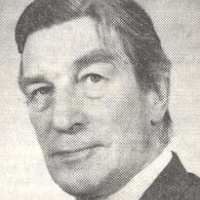 A former Managing Director of Roll Royce Engines, Sir David worked with Sir Hugh Ford to develop the total technology course in the department of Mechanical Engineering.
A former Managing Director of Roll Royce Engines, Sir David worked with Sir Hugh Ford to develop the total technology course in the department of Mechanical Engineering.
Professor Richard Selley
Dick Selley came to Imperial in 1961 as a research student. Aside from three years working in petroleum exploration in the North Sea and abroad, his career was made at Imperial College. Selley became Head of the Department of Geology in 1975. He became Professor of Applied Sedimentology in 1989. Selley was a member of Conoco's (today Conoco-Philips) exploration team that found the Lyell, Murchison and Hutton fields and has worked extensively in the application of sedimentology to petroleum exploration and production.
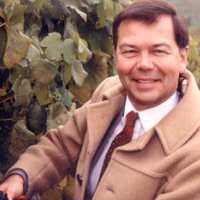
There is a fossil named after Selley - tenuitellinata selleyi - which was a foraminifera that lived in the Pacific Ocean during the Miocene Period 5 -24 million years ago.
Selley has recently applied his geological experience to the vinyards of England. It was on his advice that Denbies, the largest vineyard in the UK, was established on the North Downs - Dick, a local resident, recognised there a similarity in soil and climate to the Champagne area of France. Since its first vintage in 1989, its wines have collected many national and international awards, giving connoisseurs everywhere good reason to toast his vision.
Anita Bailey
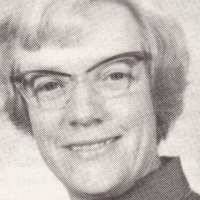 Educated at Witwatersrand and Cambridge Universities and awarded an 1851 Commission Senior Studentship Anita Bailey became the Smithson Research Fellow of the Royal Society and a Fellow of Newnham College.
Educated at Witwatersrand and Cambridge Universities and awarded an 1851 Commission Senior Studentship Anita Bailey became the Smithson Research Fellow of the Royal Society and a Fellow of Newnham College.
Her research interests included friction and lubrication. She joined the MRC Biophysics Research Unit at King's College London in 1964, then worked at a Research Institute of Fraunhofer Gesellschaft in Germany.
In 1976 she took the newly established Kodak Chair of Interface Science in the Chemical Engineering Department of Imperial, becoming Imperial's 4th Woman Professor.
Professor David Blow (1931-2004)
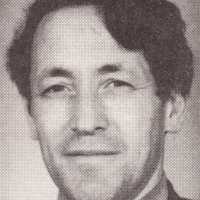 David Blow joined Imperial as Professor of Biophysics in 1977, a position he retained until his retirement in 1994. He was also Head of Physics (1991-1994) and Dean of the RCS (1981-1984). He was educated at Cambridge and was a research student under Max Perutz at the Cavendish Laboratory.
David Blow joined Imperial as Professor of Biophysics in 1977, a position he retained until his retirement in 1994. He was also Head of Physics (1991-1994) and Dean of the RCS (1981-1984). He was educated at Cambridge and was a research student under Max Perutz at the Cavendish Laboratory.
Blow was a pioneer of protein crystallography, a method which over the last 40 years has been used to determine the atomic structure of thousands of proteins, most of them important in biology or medicine. Blow made key contributions to the theory and practice of protein crystallography. He also pioneered computer methods for molecular biology.
Blow collaborated with Brian Hartley in research on the digestive enzyme chymotrypsin. Blow led the team that determined its structure in 1967, only the third or the fourth protein structure to be known. At Imperial, Blow continued his earlier ground-breaking work, mainly on the structure and mechanisms of action of enzymes.
Dr Abdus Salam (1926-1996)
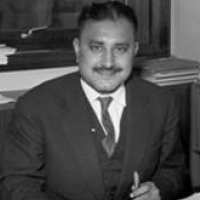 Dr. Abdus Salam was educated at the Government College Lahore and Cambridge, graduating with first class honours in Mathematics and Physics in 1949. He won the Smith's Prize at St John's College Cambridge in 1950 and obtained his PhD in 1951. This was on quantum electrodynamics and gained him the Adam's Prize.
Dr. Abdus Salam was educated at the Government College Lahore and Cambridge, graduating with first class honours in Mathematics and Physics in 1949. He won the Smith's Prize at St John's College Cambridge in 1950 and obtained his PhD in 1951. This was on quantum electrodynamics and gained him the Adam's Prize.
Between 1951 and 1954 he was Lecturer in Mathematics at the Government School in Lahore, before becoming Lecturer in Mathematics at Cambridge.
He next took a post at Imperial and was made FRS in 1955. Between 1956 and his retirement he held the Chair of Theoretical Physics at Imperial. During this tenure he was given leave to set up the International Centre for Theoretical Physics in Trieste, which he founded in 1964.
He was awarded the Nobel Prize in Physics, in 1979, jointly with S.Glashow and S. Weinberg for his electroweak theory concepts. The practice was later proven at CERN where the W and Z bosons were discovered.
Igor Aleksander (1937)
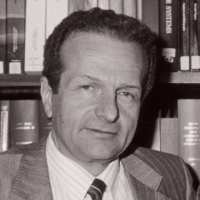 Professor Igor Aleksander (shown here on the left with Andre Gabor) joined the Computing Department in 1984. He became 1st Kobler Professor of Management of Information Technology.
Professor Igor Aleksander (shown here on the left with Andre Gabor) joined the Computing Department in 1984. He became 1st Kobler Professor of Management of Information Technology.
In 1988 he took the Chair of Neural Systems Engineering in the Electrical Engineering Department and devised the first neural pattern recognition system. Aleksander specialises in neural networks and artificial intelligence.
Sir Eric Ash (1928)
Sir Eric Ash came to Britain to escape Nazi Germany in 1938. He gained a scholarship to study at Imperial College where he took his BSc and then PhD, this studying under Denis Gabor, the Nobel Prize Winner who invented Holography and the flat televison tube.
Ash then became a Research Fellow at Stamford University, between 1952 and 1954. Returning to London, in 1954 he attended Queen Mary College, London for a year, becoming a Research Engineer at Standard Telecommunication Laboratories Ltd from 1955-1963.
Ash then joined University College London in 1963 as a Senior Lecturer becoming Professor in 1967 and Head of the Department or Electrical and Electronic Engineering in 1980.
He became Rector of Imperial in 1985, retiring in 1993. He was awarded the Faraday Medal of Institution of Electrical Engineers in 1980 and the Royal Medal of the Royal Society in 1986. Between 1997 and 2002 he was Treasurer and Vice President of the Royal Society.
Professor Simon Kirwan Donaldson FBS (1957-
Educated at Cambridge and Oxford, Donaldson was appointed Junior Research Fellow at All Souls College in 1985. Donaldson won the Fields Medal in 1986 for the study of topology and four-manifolds, and euclidian four-space.
In 1999, he moved to Imperial College London.
Frank Cooper becomes Chairman
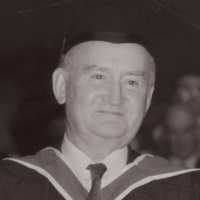 The Rt Hon Frank Cooper, educated at Pembroke College Oxford, became Chairman of the Governing Body in 1988.
The Rt Hon Frank Cooper, educated at Pembroke College Oxford, became Chairman of the Governing Body in 1988.
Read an appreciation of Sir Frank Cooper by Eric Ash
David Potter
David Potter was educated at Cambridge and Imperial College (PhD 1970). He then remained at Imperial where he worked as a Lecturer in the Physics Department. Potter worked on mathematical problems related to plasma physics. Here he developed his ideas in the methods of using micro-processes to build hand organisers.
In 1980 with some of his ex-students from Imperial, he founded PSION (Potter's Scientific Instruments Or Nothing) which began to develop software and hardware applications, based upon the academic work conducted at Imperial. In 1984 PSION launched the Psion Organiser, the first volume-produced handheld computers. The Organiser may seem limited by today's standards but was revolutionary for its time. From there PSION went from strength to strength, becoming one of the most successful British IT companies, both in commercial and in terms of technological innovation.
Professor Richard Ian Kitney OBE, FREng, DSc (Eng) FCGI
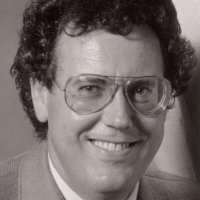 Richard (Dick) Kitney is Professor of Biomedical Systems Engineering in the Department of Bioengineering, Senior Dean and Director of the Graduate School of Engineering and Physical Science, Imperial College London. He was the first Head of Department of the Department of Bioengineering and the Director of the Centre of Medical and Biological Systems.
Richard (Dick) Kitney is Professor of Biomedical Systems Engineering in the Department of Bioengineering, Senior Dean and Director of the Graduate School of Engineering and Physical Science, Imperial College London. He was the first Head of Department of the Department of Bioengineering and the Director of the Centre of Medical and Biological Systems.
He joined the College as a student in the Electrical Engineering department, spending his vacations working in industry for the company that supported his studies.
A leading expert in the field of biomedical engineering and healthcare, Professor Dick Kitney received a prestigious Honorary Fellowship of the Royal College of Surgeons in June 2006. He is the first engineer ever to receive an Honorary Fellowship of the Royal College, according to the College's President Bernard Ribeiro.
As well as being an Honorary Fellow of the Royal College of Surgeons, Professor Kitney holds Fellowships of the World Technology Network, the College of Fellows of the American Institute for Medical and Biological Engineering and the City and Guilds of London Institute. In 2003, he received the highest honour bestowed by the International Federation of Biomedical Engineering Societies, becoming an Academician of the International Academy of Biomedical Engineering.
Professor Kitney was awarded the Order of the British Empire (OBE) for services to Information Technology in Healthcare in June 2001.
Alongside his work at Imperial, Professor Kitney is the co-founder of spin-out company Visbion, a medical IT company which develops software to help healthcare professionals share patient records online rather than using paper files.
Professor Kitney has also been a member of both British Government and European Commission Committees on the application of Information Technology to Healthcare and is involved in the formulation of healthcare policy for the UK and the European Union.
Professor Brian Davies
Brian Davies, who first joined Imperial in 1983, became the first Professor of Medical Robotics in 2000.
He conducts ground-breaking research on robotic and computer aided surgery and was involved in developing PROBOT, which in 1991 became the first robot to actively remove tissue from a patient in a clinical setting. The robot carried out a prostate surgery under the direction of a surgeon, cutting back an enlarged prostate gland that was obstructing urine flow.
More recently he was involved in creating a new robot for knee surgery, called ACROBOT, which led him to form the spin-out company Acrobot Co Ltd with Justin Cobb, Professor of Orthopaedics of Imperial.
Ernest Ronald Lord Oxburgh (1934)
Lord Oxburgh was educated at University College Oxford and took his PhD at Princeton University. He has held academic positions at Oxford and Cambridge Universities. He became Head of the Department of Earth Sciences in Cambridge and was President of the Queen’s College. He was Chief Scientific Advisor to the Ministry of Defence between 1988 and 1993 and knighted in 1992.
In 1993 he became Rector of Imperial College and created Imperial College School of Medicine and oversaw the merger with Wye College. He was made a life peer in 1999 as Lord Oxburgh of Liverpool and is active in the House of Lords on Science issues as Chairman of the Select Committee on Science and Technology. He became Chairman of Shell in March 2004.
Professor Christopher Edwards
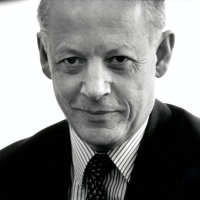 Professor Chris Edwards was the first Head of Imperial College School of Medicine from 1995-2001. Educated at Cambridge, Edwards joined St Bartholomew’s Hospital, moving to Edinburgh as Professor of Clinical Medicine in 1980. He became a Governor of the Wellcome Trust in 1994.
Professor Chris Edwards was the first Head of Imperial College School of Medicine from 1995-2001. Educated at Cambridge, Edwards joined St Bartholomew’s Hospital, moving to Edinburgh as Professor of Clinical Medicine in 1980. He became a Governor of the Wellcome Trust in 1994.
Professor Bill Wakeham
Professor Wakeham came to Imperial in 1971 as a lecturer in the department of chemical engineering and chemical technology. He was promoted to reader in 1979 and to a personal chair in 1985, becoming head of department in 1988.
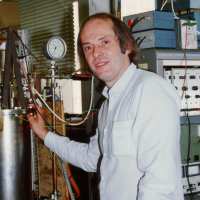 He was appointed pro rector (research) in 1996, combining this role with the position of deputy rector the following year, and pro rector (resources) in 1999.
He was appointed pro rector (research) in 1996, combining this role with the position of deputy rector the following year, and pro rector (resources) in 1999.
He left Imperial in 2001 to become Vice-Chancellor of the University of Southampton.
Professor John Burland
John Burland, Emeritus Professor of Soil Mechanics (1980-2001), is best known as the engineer who prevented the Leaning Tower of Pisa from toppling over, for which he was awarded the Knight Commander of the Royal Order of Francis I by the Italian government. He was also involved in ensuring that the Houses of Parliament and Big Ben were unharmed by the extension of the London Underground Jubilee Line.
Burland worked also on the construction of a large underground park at the Palace of Westminster and the stabilising of the Metropolitan Cathedral of Mexico City. His team was also involved in the extension of the Jubilee Line and he has advised on many geotechnical aspects of that project, including ensuring the stability of the Big Ben Clock Tower.
Professor John Lawton
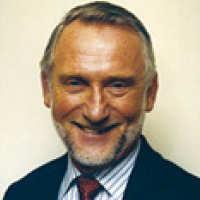 John Lawton joined Imperial in 1989 to establish the Centre for Population Biology at the College's Silwood Campus, acting as director until 1999 when he became chief executive of the Natural Environment Research Council.
John Lawton joined Imperial in 1989 to establish the Centre for Population Biology at the College's Silwood Campus, acting as director until 1999 when he became chief executive of the Natural Environment Research Council.
Lawton has conducted pioneering research in the population dynamics and biodiversity of birds and insects, with emphasis over the last decade on the impacts of global environmental change on wild plants and animals. He was founder and chairman of The Royal Society for the Protection of Birds.
While at Imperial, he led the creation of Ecotron, a unique research facility consisting of sixteen small environmentally controlled chambers in which ecosystems are exposed to different conditions such assoil, light, water and wind over long periods.
Professor Averil Mansfield
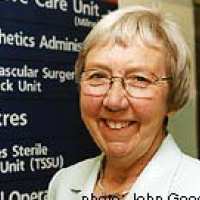 Averil Mansfield joined the Royal Postgraduate Medical School in the 1980s. In 1993 she became the first female professor of surgery in the UK at St Mary's Hospital Medical School, a position she retained until 2004.
Averil Mansfield joined the Royal Postgraduate Medical School in the 1980s. In 1993 she became the first female professor of surgery in the UK at St Mary's Hospital Medical School, a position she retained until 2004.
She set up the Women in Surgical Training scheme in 1991 in order to encourage more women into surgery. In the past 10 years, the number of women consultant surgeons has almost doubled.
Professor Colin Caro
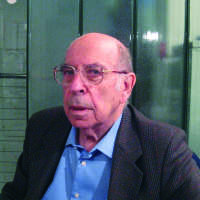 Professor Colin Caro was founder and director (1966-1989) of the Physiological Studies Unit at Imperial which was one of the first units worldwide to bring together scholars from different backgrounds (applied mathematicians, engineers, physiologists) to work on what is today called bioengineering. It was from this unit that the Department of Bioengineering later emerged in 1998.
Professor Colin Caro was founder and director (1966-1989) of the Physiological Studies Unit at Imperial which was one of the first units worldwide to bring together scholars from different backgrounds (applied mathematicians, engineers, physiologists) to work on what is today called bioengineering. It was from this unit that the Department of Bioengineering later emerged in 1998.
Caro's work on vascular and respiratory flow has been path-breaking and has influenced vascular communities worldwide. Recently he worked on the geometry of arteries, revealing that the arterial system is three-dimensional thereby it generates a swirling fluid flow that prevents the stagnant blood flow which can cause vascular disease.
Professor Donal Bradley CBE
Donal Bradley's research focuses on the development of molecular electronic materials and devices, including polymer light emitting diodes to which he holds the patent.
PLEDs are now being developed as a next generation technology for flat panel displays, with electronics company Philips already using the technology in a number of products. The light, durable and low-energy displays they produce can be used for a number of electronic devices such as mobile phones, MP3 players and DVD consoles. PLEDs can also have medical applications, as they can provide a light source for microanalysis chip to be used in point of care diagnostics. Molecular Vision Ltd, a spin-out set up by Professor Bradley with Imperial College chemists John and Andrew de Mello, is currently developing this technology.
Professor Bradley, now Imperial'sVice-Provost (Research), is the recipient of a number of prestigious awards including the 2003 Descartes Prize and the Jan Rajchman Prize, and is one of the most highly cited physicists today.
Sir Richard Sykes
Sir Richard Sykes, former Chairman and Chief Executive of GlaxoSmithKline, became Imperial's thirteenth Rector in January 2001. Under his leadership, the College has consolidated its position as a world-leading centre of innovative research, rated the ninth best university in the world in the latest Times Higher Education Supplement World University Rankings.
Professor Sir Ara Darzi
Professor Sir Ara Darzi holds the Paul Hamlyn Chair of Surgery and is also Director of the institute of Global Health Innovation and Chair of Imperial College Health Partners.Since joining Imperial in 1995, he and his team have worked extensively on surgical technology and its wider application. Professor Darzi and his colleagues have pioneered the use of minimally invasive techniques in surgery in the UK, enabling surgeons to perform microscopic and macroscopic operations in places which formerly could be reached only with large incisions. The benefits of this new surgery include less operative trauma for the patient, reduction of hospitalisation time, less pain and scarring, and reduction of the complications related to the surgical trauma.
A famous example of his pioneering work is Da Vinci, the first minimal access system capable of eliminating natural tremor in a surgeon's hand. Controlled by surgeons using a 'joystick' while seated at a terminal, Da Vinci's hands make incisions, returning the dexterity lost with keyhole instruments due to its special wristed joints and 3-D vision. Da Vinci became famous when it featured in a scene in James Bond's Die Another Day film.
Lord Robert Winston
Robert Winston studied medicine and became a registrar at Hammersmith Hospital in 1970. He became Reader in Fertility Studies, RPMS at the Royal Postgraduate Medical School in 1982 and Professor in 1986.
He has conducted pioneering research in in-vitro fertilisation and reproductive genetics. The research of his team enabled families with a history of a particular genetic disease to have children free of fatal illnesses. This work on Preimplantation Diagnosis also led to the first diagnosis of chromosome disorders (e.g. Down's Syndrome in embryos) and establishing the sex of a baby.
Professor Winston is also an excellent communicator and has presented a number of very successful TV series including The Human Body and Child of Our Time. As a member of the House of Lords he plays a very active role in debates on education and science. He also served as the president of the British Association for the Advancement of Science from 2004 to 2005.
Professor Alan Fenwick OBE
Alan Fenwick directs the Schistosomiasis Control Initiative, established at Imperial in 2002, which builds on his extensive research into combating tropical diseases in developing countries.
His work to combat schistosomiasis started in 1966 in Tanzania and he also worked in Sudan and Egypt for many years to tackle the parasitic disease that leads to chronic ill-health and affects more than 200 million people in developing countries.
More recently Professor Fenwick and other experts warned that the concentration on the "big three" diseases of Aids, tuberculosis and malaria has diverted resources from half a dozen easily treated illnesses that have a greater impact on healthcare and economic development in Africa. The group went on to call for a low-cost but highly effective public health programme that would target diseases like lymphatic filariasis, schistosomiasis, intestinal helminths, onchocerciasis and trachoma, which can be treated with cheap but highly effective drugs.
Professors Ravinder Maini and Marc Feldmann
Ravinder Maini (right), Emeritus Professor of Rheumatology, and Marc Feldmann, Professor of Cellular Immunology, have researched extensively on rheumatoid arthritis and made major breakthroughs in its treatment. Their work paved the way for anti-TNF drugs, which have transformed the lives of thousands of people worldwide.
Professor Sir Roy Anderson
In July 2008, Sir Roy Anderson, FRS, FMedSci, took up office as the 14th Rector of the College. A distinguished infectious disease epidemiologist, Sir Roy had been associated with the College for more than 40 years, first arriving as a zoology undergraduate in 1965. He completed his PhD in parasitology in 1971 and has spent much of his career at Imperial, becoming one of its youngest professors in 1982 at the age of 35, and subsequently head of department at 37. He took up the role of Rector following four years on secondment to the UK Ministry of Defence, where he was Chief Scientific Advisor.
Professor Sir John Pendry
John Pendry, Chair of Theoretical Solid State Physics, is one of the founders of the field of metamaterials. This led to the demonstration of the world's first 'invisibility cloak' in 2006, constructed from metamaterials, built from artificial atoms that cause microwaves to split and flow around the material rather than penetrating and bouncing off it to make it detectable. This breakthrough could have a variety of applications for radar and communications technologies.
Lord Kerr of Kinlochard
Lord Kerr of Kinlochard took up the post of Chairman of Court and Council in January 2005, stepping down in 2011. "To work for Imperial is a huge honour," said Lord Kerr. "They are, and will stay, second to none."
Born in Scotland in 1942, John Kerr, (son of a Glasgow University Cardiologist), joined the UK Diplomatic Service in 1966. His early career was spent principally on politico-military issues, including in the Embassies in Moscow and Washington, and on economic issues, including Development in Pakistan. He was seconded to the Treasury from 1979 to 1984, worked on early privatisations, and became Principal Private Secretary to two Chancellors of the Exchequer. From 1987 to 1990 he was the Foreign Office's European Community Under-Secretary, and from 1990 to 1995 was UK Permanent Representative to the European Union.
In 1995 he returned to Washington as Ambassador, and from 1997 to 2002, back in London, was Head of the Diplomatic Service and FCO Permanent Under-Secretary of State, the first member of the Service to hold its three top jobs. His tenure as Permanent Under-Secretary saw the return of a British ambassador to Iran, the establishment of an Embassy in North Korea, and the re-opening of the embassy in Libya. In 2000 he became the most senior UK official to visit Tripoli since 1984.
On leaving the FCO he held the international appointment of Secretary-General of the European Convention, chaired by President Giscard D'Estaing, which prepared the EU Constitutional Treaty. He became an (independent) member of the House of Lords in 2004, and serves on its EU Select Committee. A Director of Shell since 2002, he chaired the group who instigated the unification with Royal Dutch, and has been Deputy Chairman of Royal Dutch Shell plc since 2005. He is also on the Boards of Rio Tinto and the Scottish American Investment Trust.
Sir Keith O’Nions 2009-2014
Sir Keith O’Nions took up the post of Acting Rector of Imperial College London on 1 January 2010, after joining the College in July 2008 to set up and direct a new Institute for Security Science and Technology.
Before joining the College Sir Keith was Director General, Science and Innovation in the Department for Innovation, Universities and Skills. This followed his position as Chief Scientific Adviser at MOD from January 2000 to July 2004 and Director General, Science and Innovation and Chief Scientific Adviser at DTI from 2004 onwards.
He attended the University of Nottingham, gained a PhD in Earth Sciences from the University of Alberta in 1969 and became a Postdoctoral Fellow at the University of Oslo in 1970.
From 1971 to 1975 he was Demonstrator and then Lecturer in Geochemistry at University of Oxford. He became Professor of Geology at Columbia University in 1975, Royal Society Research Professor in Cambridge from 1979 until 1995 when he moved to be Head of Earth Sciences at Oxford.
Keith O'Nions has participated in a broad range of academic and technological committees. He became a Fellow of the American Geophysical Union in 1979 and a Member of the Norwegian Academy of Science and Letters in 1980. He is a Fellow of the Royal Society (1983), Honorary Fellow of Indian Academy of Sciences (1998), Fellow Indian National Science Academy (2001) and Honorary Fellow Royal Academy of Engineering (2005). He has received Honorary doctorates from a number of Universities.
He was a member of the UK Government’s Council of Science and Technology (1998-2000) and Trustee and then Chairman of the Natural History Museum (1996-2005).
Tejinder Singh Virdee
Distinguished for the design, construction and exploitation of the huge CMS experiment at the CERN Large Hadron Collider
Alice Gast appointed President 2014
Professor Alice Gast succeeded Sir Keith O’Nions as President of Imperial College London in September 2014 to become the 16th head of Imperial, and the first woman and first appointment from overseas to lead the College.
An internationally renowned scholar in the field of chemical engineering and a leader in higher education, Professor Gast previously served as President of Lehigh University in Pennsylvania since 2006. Before Lehigh University, Professor Gast was Vice President for Research and Associate Provost at the Massachusetts Institute of Technology and held the Robert T. Haslam chair in chemical engineering. She was previously at Stanford University from 1985 to 2001 as a professor of chemical engineering and as affiliated faculty at Stanford Synchrotron Radiation Laboratory. She has been a US Science Envoy to Central Asia and is currently a Board Director of the Chevron Corporation and serves as a member of the Board of Trustees of King Abdullah University of Science and Technology.
Sir Philip Dilley – Chairman of Imperial College 2015 -
Sir Philip Dilley graduated from Imperial College London in 1976 with a BSc in Civil Engineering. Sir Philip has served on the Council of Imperial College London since 2011, and was appointed as its Chair in 2015. Following his graduation from Imperial, Sir Philip joined Arup, and was its Executive Chairman from 2009 to 2014. He was the Chairman of the Environment Agency between 2014 and 2016. From 2011 to 2013, he was a member of the Prime Minister’s Advisory Group of business leaders from sectors of strategic importance, and chaired London First between 2012 and 2014. He is currently a non-executive Chairman of architects Woods Bagot and a non-executive board member of Grosvenor. Sir Philip was knighted in 2014 for services to Consulting Engineering.
Professor James Stirling 2013-2018
Professor James Stirling became Imperial’s first Provost in 2013, following a distinguished academic career. During his five year tenure at Imperial, Professor Stirling was responsible for leading Imperial’s core academic mission of education, research and innovation.
After a double-first and a distinction in Part III of the mathematical Tripos at Peterhouse, Professor Stirling took a PhD in the Department of Applied Mathematics and Theoretical Physics at the University of Cambridge.
Professor Stirling’s research career included stints in the United States, at CERN, and, holding a series of academic and leadership roles, at the Universities of Cambridge – including as Jacksonian Chair of Natural Philosophy – and Durham, as the first Director of the Institute for Particle Physics Phenomenology (IPPP).
Professor Stirling’s work in theoretical particle physics has resulted in more than 300 research papers, including some of the most highly cited of all time in the physical sciences. His work in quantum chromodynamics has been central to discoveries in physics and many of his calculational techniques have now been adopted as standard practice. His groundbreaking work in particle physics phenomenology led to his involvement in the MSTW collaboration studying the ‘parton’ structure of the proton with the Large Hadron Collider.
He led the Cavendish Laboratory at the University of Cambridge, home to some 29 Nobel laureates since its founding in 1874, before joining Imperial in 2013, retiring in the summer of 2018. In October 2018 Professor Stirling received Imperial’s highest honour - an honorary doctorate of science –in recognition of his outstanding contributions to physics and to the College.
2013 – Regius Professor Christopher Toumazou
In 1994 Chris Toumazou was appointed the youngest Professor ever to be appointed at Imperial College, at the age of 33. Professor Toumazou is distinguished for his innovative silicon technology and integrated circuit design for electronic devices, developing wearable or implantable medical devices for early diagnoses and detection of disease.
In 2009 Professor Toumazou founded the founding of the Institute of Biomedical Engineering at Imperial College, and in 2013 became Imperial’s first recipient of a prestigious Regius professorship, recognising the highest standard of research and teaching in the Faculty of Engineering.
Professor Fotis Kafatos
Professor Kafatos was instrumental in creating the ERC, which is considered a milestone for the European scientific community, since it was the first to allocate funding to research based exclusively on scientific merit instead of being evenly distributed among the European nations.
--tojpeg_1417968690499_x2.jpg)